SOL MEDIAN CHE DE Conoce a los candidatos para las elecciones del 4 de abril
¡El 4 de abril hay elecciones en Anchorage! Ese día, los votantes de toda la ciudad irán a las urnas para decidir dos escaños en la Junta Escolar y siete para Asamblea de Anchorage. Aquí en Sol de Medianoche, creemos firmemente en la importancia de participar en la política local. Hacer que tu voz se escuche en tu comunidad es la mejor manera de marcar la diferencia. Por eso, es muy importante participar en las próximas elecciones. Para ello, es valioso saber cuál es la posición de cada candidato sobre los asuntos fundamentales en nuestra ciudad. Es por eso por lo que nos pusimos en contacto para saber los motivos de su postulación y sus puntos de vista sobre dos asuntos claves. De esta manera, podrás estar preparado para tomar una decisión informada el día de las elecciones. Esto es lo que nos dijeron:
Meet the candidates for the April 4th election
Election Day is April 4th! And on that Tuesday, voters all over Anchorage will go to the polls to decide two seats in the School Board and several seats for the Anchorage Assembly. Here at Sol de Medianoche, we firmly believe in the power of participating in local politics. Making your voice heard in your community is the best way to make a difference. So, it is vital to participate in the upcoming elections. To do so, it is important to know where each candidate stands on the pressing issues in our city. We reached out to the candidates and asked them their motivation for running and their perspective on two key issues. That way, you will be better prepared to make an informed decision on Election Day. Here’s what they told us:
1. ¿Qué te motivó a postularte para un cargo público?
Siendo un residente de toda la vida de Anchorage, he visto a la comunidad empeorar en los últimos diez años con lo que no creo que la mayoría de la gente de Anchorage esté de acuerdo.
2. ¿Cómo crees que la diversidad afecta a Alaska?
Con una población tan diversa en Anchorage y en toda Alaska, por supuesto, el impacto es grande. Viviendo aquí por más de 50 años, tengo mucha información sobre esa diversidad y puedo mantener una mente abierta cuando se trata de muchas opiniones diferentes.

3. ¿Cómo apoyarías a la comunidad BIPOC de Anchorage?
Primero, escucharía. Creo que no hay suficiente de eso a nuestros alrededores. Luego formularé legislación para lo que la gente realmente está pidiendo.
4. ¿Crees que la religión debería jugar un papel en la política? Si es así, ¿cuál? Bueno, este país tiene origen judeo-cristiano. No es que esta sea la única manera, pero pedirle dirección a Dios, solo puede ser algo bueno.
1. What motivated you to run for office?
Being a lifelong resident of Anchorage, I’ve seen the community take a turn for the worse over the last ten years that I don’t think most of the people of Anchorage agree with.
2. How do you think diversity impacts Alaska?
With such a diverse population in Anchorage and all over Alaska of course the impact is great. Living here for over 50 years, I have a lot of insight of that diversity and can keep an open mind when it comes to many different opinions.

3. How would you support Anchorage’s BIPOC community?
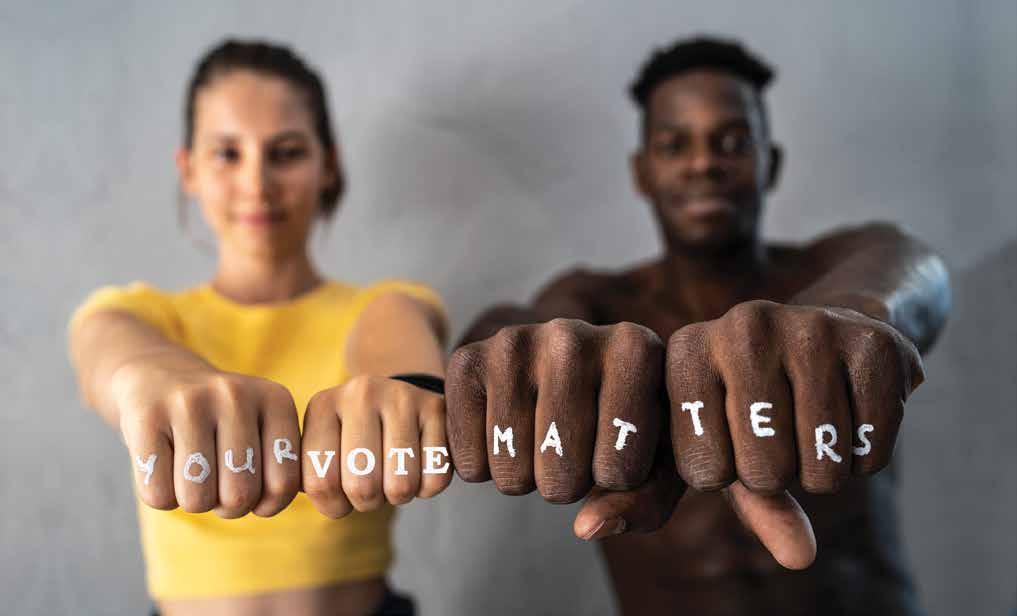
First, I would listen. I think there is not enough of that going around. Then formulate legislation to what the people are truly asking for.
4. Do you think religion should play a role in politics? If so, which one?
Well, this country was born from a Judo-Christian background. Not that this is the only way, but asking God for direction, can only be a good thing.
DISTRITO 1 - ASIENTO B - NORTH ANCHORAGE JOHN TRUEBLOOD
DISTRICT 1 - SEAT B - NORTH ANCHORAGE J ohn T rueblood
3 - ASIENTO E - WEST ANCHORAGE ANNA BRAWLEY
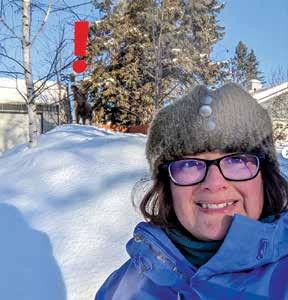
1. ¿Qué te motivó a postularte para un cargo público?
Este otoño, decidí postularme porque creo que nuestra ciudad prosperará si nos enfocamos en lo que realmente importa: servicios confiables de la ciudad central, vecindarios seguros, una economía fuerte y amigable para los negocios, un excelente sistema educativo y viviendas asequibles para todas las etapas de la vida, desde casas de inicio hasta jubilación. Soy una urbanista experimentada que sabe cómo hacer las cosas. Me he desempeñado como presidente de la Comisión Asesora de Presupuesto de Anchorage, he trabajado en muchos de nuestros problemas apremiantes como empleada del sector privado y he servido como presidente de mi consejo comunitario. Me encantan las ciudades, especialmente Anchorage, y quiero ayudar a la ciudad a convertirse en la gran ciudad que tenemos el potencial para ser.
2. ¿Cómo crees que la diversidad afecta a Alaska?
Somos mejores cuando todos nos sentimos bienvenidos llamando a Anchorage nuestro hogar. He tenido el privilegio de trabajar con muchos equipos y comunidades diversas. Hay un tema consistente: la diversidad hace que los resultados sean mejores. Cuando aportas más conocimientos, experiencia y mentes a la mesa, obtienes creatividad e innovación. Nuestra ciudad tiene algunas de las escuelas y vecindarios más diversos de este país. Necesitamos fomentar y apoyar la diversidad mientras nos esforzamos por construir una ciudad que funcione para todos.
3. ¿Cómo apoyarías a la comunidad BIPOC de Anchorage?
Me apasiona la participación en asuntos de la comunidad, especialmente en el gobierno local. Necesitamos ver a nuestros líderes, dueños de negocios, médicos y profesionales, oficiales de policía y empleados de la ciudad, y otros roles importantes ocupados por personas que reflejen nuestra comunidad diversa. También promoveré políticas, programas y decisiones con el objetivo de lograr equidad para los residentes y vecindarios de Anchorage: vivienda justa, protección de los derechos civiles y lucha contra la discriminación y el odio.
4. ¿Crees que la religión debería jugar un papel en la política? Si es así, ¿cuál?
La Primera Enmienda de nuestra Constitución protege el ejercicio de la religión, lo que significa que todos somos libres de practicar nuestras creencias. Sin embargo, para que todas las personas tengan esta libertad, debemos mantener separados el gobierno y la religión. La gente vive sus valores y su fe, pero debemos respetar las creencias de los demás, y no basar el gobierno y las leyes en una religión.
A nn A b r Awley
1. What motivated you to run for office?
This fall, I decided to run because I believe our city will thrive if we fo cus on what really matters: reliable core city services, safe neighbor hoods, a strong and business-friend ly economy, a great education system, and affordable housing for all stages of life, from starter homes to retirement. I am an experienced city planner who knows how to get things done. I’ve served as chair of the Anchorage Budget Advisory Commission, I’ve worked on many of our pressing issues as a private sector employee, and I’ve served as the president of my community council. I love cities - especially Anchorageand I want to help the city grow into the great city we have potential to be.
2. How do you think diversity impacts Alaska?
We are best when everyone feels welcome to call Anchorage home. I have the privilege to work with many diverse teams and communities. There is one consistent theme: diversity makes outcomes better. When you bring more expertise, experience, and minds to the table, you get creativity and innovation. Our city has some of the most diverse schools and neighborhoods in this country. We need to foster and support diversity as we strive to build a city that works for everyone.
3. How would you support Anchorage’s BIPOC community?
I’m passionate about community involvement, especially local government. We need to see our leaders, business owners, doctors and professionals, police officers and city employees, and other important roles be filled by people who reflect our diverse community. I will also promote policies, programs, and decisions with the goal of bringing equity for Anchorage residents and neighborhoods: fair housing, protection of civil rights, and standing up against discrimination and hate.
4. Do you think religion should play a role in politics? If so, which one?
The First Amendment protects exercise of religion, which means everyone is free to practice their beliefs. In order for all people to have this freedom, however, we must keep government and religion separate. People live their values and their faith, but we must respect each other’s beliefs, and not base government and laws on one religion.
DISTRITO 3 - ASIENTO E DUSTIN DARDEN

1. ¿Qué te motivó a postularte para un cargo público?
La Asamblea está metida demasiado dentro de sus propios temas, perjudican a los negocios, los cierran, controlan y obligan a hacer cosas que no queremos hacer, hacen que la gente use cubrebocas y promueven la vacuna, veo que mucha gente se enferma por las vacunas y la radiación 5G nos enferma. Ponen veneno en el agua y envenenan los aviones.
2. ¿Cómo crees que la diversidad afecta a Alaska?
Anchorage tiene todo tipo de personas que traen talentos y fortalezas a la tierra, Salmo 133: 1-2, “He aquí, ¡qué bueno y qué agradable es para los hermanos morar juntos en unidad! Es como el precioso ungüento sobre la cabeza”. Hechos 2:2, Todos estaban de acuerdo en un solo lugar. Y de repente vino un sonido del cielo como de un viento fuerte”.
DISTRICT 3 - SEAT E d us T in d A rden
1. What motivated you to run for office?
Assembly is too much inside their own heads, it hurts the business, they shut them down, control and make you do things we don’t want to do, they make the people put the masks on their face and they push the shot, I see lots of people get sick from the shots and the 5G radiation make us sick, they put poison in water and poison out the planes.
2. How do you think diversity impacts Alaska?
Anchorage has every type of people that bring talents and strengths to the land. Psalm 133:1-2, “Behold, how good and how pleasant it is for brethren to dwell together in unity! It is like the precious ointment upon the head.”
Acts.2:2, “They were all with one accord in one place. And suddenly there came a sound from heaven as of a rushing mighty wind.”
3. ¿Cómo apoyarías a la comunidad BIPOC de Anchorage?
“Sean amables unos con otros, tengan metas, sueños y comida”. “Sobre esta roca edificaré mi iglesia; y las puertas del infierno no prevalecerán contra ella”. -Jesucristo “Si tienes la oportunidad de mejorar las cosas y no lo haces, entonces estás perdiendo tu tiempo en la tierra.” -Roberto Clemente “Creo que solo hay una raza: la raza humana”. Rosa Parks
4. ¿Crees que la religión debería jugar un papel en la política? Si es así, ¿cuál? “Si alguno de vosotros parece ser religioso, y no frena su lengua, sino engaña a su propio corazón, la religión de este hombre es vana. Religión pura e inmaculada delante de Dios y del Padre es esta: visitar a los huérfanos y a las viudas en su aflicción, y mantenerse sin mancha del mundo”. Santiago, un trabajador de la construcción de Nazaret en Galilea
3. How would you support Anchorage’s BIPOC community?
Be kind to one another, have goals dreams and food. “Upon this rock I will build my church; and the gates of hell shall not prevail against it.” - Jesus Christ “If you have an opportunity to make things better and you don’t, then you are wasting your time on earth.” - Roberto Clemente
“I believe there is only one race - the human race.” Rosa Parks
4. Do you think religion should play a role in politics? If so, which one?
“If any man among you seems to be religious, and bridleth not his tongue, but deceiveth his own heart, this man’s religion is vain. Pure religion and undefiled before God and the Father is this, To visit the fatherless and widows in their affliction, and to keep himself unspotted from the world.”
James, a construction worker from Nazareth in Galilee
SOL DE MEDIANOCHE ANCHORAGE, ALASKA 2 MARCH 2023 Sol de Medianoche is a monthly publication of the Latino community in Anchorage, Alaska (907) 891 2636 | www.soldemedianochenews.org | info@soldemedianochenews.org Publisher: Sol de Medianoche Editorial Board | Chief Editor: Lina Mariscal | Graphic Design: Manelik Guzmán @mnlkgzmn | Advertising: Lina Mariscal | Thank you to our contributors:
Matías,
Graterol, Daniel Vicencio, Matt Acuña Buxton, Pillar Marrero, Jenny-Marie Stryker | Sol de Medianoche is published by Sol de Medianoche News,
de Medianoche News, LLC.
portion
be reproduced in whole or in part by any means including electronic retrieval systems without
ISSN
Carlos
Campbell Small, Pedro
LLC. The contents are copyright 2016 by Sol
No
may
the express written permission of the publisher. | ISSN (print) 2473-6880 |
(online) 2473-6899.
DISTRITO
DISTRICT 3 - SEAT E - WEST ANCHORAGE
Anna Brawley Dustin Darden FOTOS: CORTESÍA
FÉLIX RIVERA
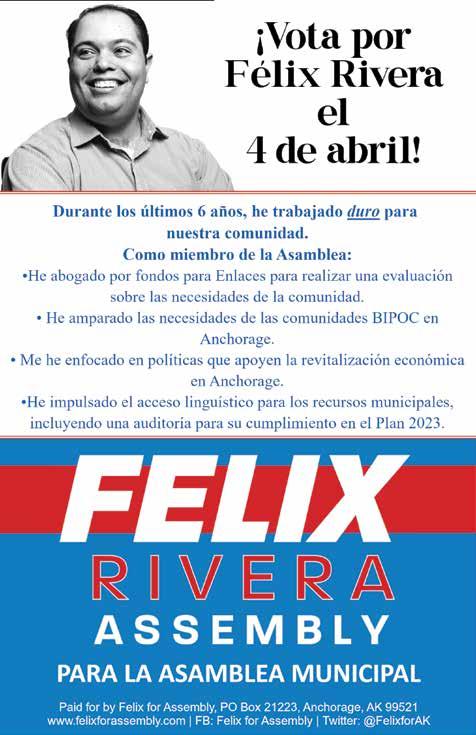
1. ¿Qué te motivó a postularte para un cargo público?
Mi interés en los problemas locales comenzó cuando utilicé el sistema de autobuses PeopleMover como mi única fuente de transporte de 2008 a 2012. Durante el invierno de esos años, vi el fracaso de la política pública de primera mano cada vez que llegaba a mi destino en el autobús, especialmente en las carreteras estatales. Esto me motivó a interesarme en temas locales y, a partir de ahí, me involucré en una amplia variedad de temas, desde los derechos de los inmigrantes hasta la defensa de los jóvenes y los derechos LGBTQIA+. Esta profunda experiencia en muchos temas y relaciones con varias comunidades hizo que fuera mucho más fácil para mí decir que sí cuando me pidieron que me postulará para un cargo en 2017.
2. ¿Cómo crees que la diversidad afecta a Alaska?
La diversidad tiene un gran impacto en nuestra comunidad, tanto desde una perspectiva cultural como económica. La diversidad enriquece nuestra comunidad y nos convierte en un mejor lugar para vivir, aumentando nuestra calidad de vida. Cuando la gente ve una comunidad que abraza su diversidad, hace de este un lugar donde la gente quiere quedarse y donde las familias jóvenes quieren venir a vivir. Es por eso por lo que he sido un defensor del movimiento Welcoming Anchorage, el cual busca garantizar que todas las comunidades se sientan bienvenidas
y puedan comprometerse con el gobierno local de una manera que tenga sentido para ellos lingüística y culturalmente.
3. ¿Cómo apoyarías a la comunidad BIPOC de Anchorage?
Durante el apogeo de la pandemia, apoyé las necesidades de las comunidades BIPOC asegurándome de que tuviéramos diversas voces en lugares esenciales en varios grupos que decidían soluciones o medidas provisionales. También abogué por fondos federales que la Asamblea recibió a través de CARES y ARPA para que llegaran a organizaciones dirigidas por BIPOC. Si soy reelegido, continuaré siendo una voz y defensor de nuestras comunidades BIPOC para garantizar que construyamos una ciudad más equitativa.
4. ¿Crees que la religión debería jugar un papel en la política? Si es así, ¿cuál? Si bien la religión puede afectar la propia moralidad personal, no debe afectar la esfera pública. Es por eso que presioné tanto para aprobar la prohibición de la terapia de conversión en 2020 que garantice que los profesionales con licencia no puedan dañar a los jóvenes de Anchorage con esta práctica. También es por eso que continúo luchando para garantizar que el estado proteja a las personas LGBTQIA + en términos de vivienda, empleo y alojamiento público. Porque las propias creencias religiosas personales de alguien no deberían hacer que me quede sin hogar o pierda mi trabajo.
-
G - MIDTOWN ANCHORAGE F elix r iver A
1. What motivated you to run for office?
My interest in local issues began when I rode the PeopleMover bus system as my sole source of transportation from 2008 to 2012. During the winter of these years, I saw the failure of public policy firsthand whenever I would reach my destination on the bus, especially on state roads. This motivated me to get interested in local issues and from there, got involved in a wide variety of issues, from immigrant rights to youth advocacy, to LGBTQIA+ rights. This deep background in many issues and relationships with various communities made it much easier for me to say yes when I was asked to run for office in 2017.
2. How do you think diversity impacts Alaska?
Diversity has a huge impact on our community, both from a cultural and economic perspective. Diversity enriches our community and makes us a better place to live, increasing our quality of life. When people see a community that embraces its diversity, it makes this a place where people want to stay and where young families want to come live. That’s why I have been a champion for the Welcoming Anchorage movement, which seeks to ensure that all communities feel welcome and are
able to engage with local government in a way that makes sense to them linguistically and culturally.
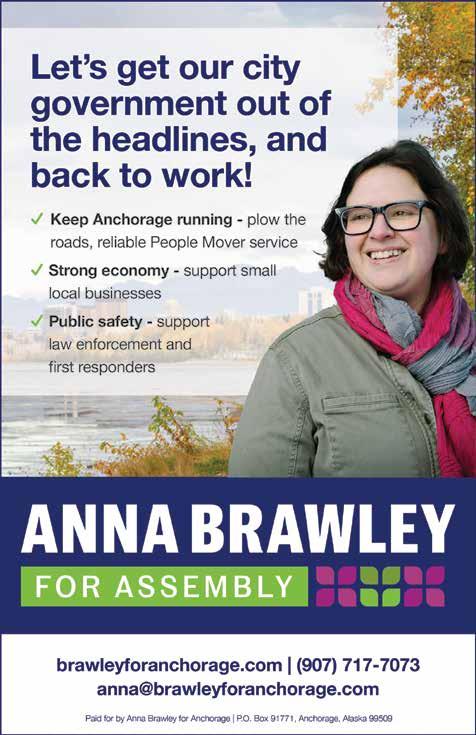
3. How would you support Anchorage’s BIPOC community?
During the height of the pandemic, I supported the BIPOC communities needs by ensuring that we had diverse voices in places of power in various groups that were discussing solutions or stopgap measures. I also advocated for federal funding the Assembly received through CARES and ARPA to go to BIPOC-led organizations. If re-elected, I will continue to be a voice and champion for our BIPOC communities to ensure we build a more equitable city.
4. Do you think religion should play a role in politics? If so, which one? While religion may impact one’s own personal morality, it should not impact the public sphere. That is why I pushed so hard to pass a conversion therapy ban in 2020 that ensures that licensed professionals cannot harm Anchorage youth with this practice. It is also why I continue to fight to ensure that the state protects LGBTQIA+ individuals in terms of housing, employment, and public accommodations. Because someone’s own personal religious beliefs shouldn’t cause me to become homeless or lose my job.
MARCH 2023 3 WWW.SOLDEMEDIANOCHENEWS.ORG
DISTRITO 4 - ASIENTO G - MIDTOWN ANCHORAGE
DISTRICT 4
SEAT
DISTRITO 5 - ASIENTO I - EAST ANCHORAGE
SPENCER MOORE
1. ¿Qué te motivó a postularte para un cargo público?
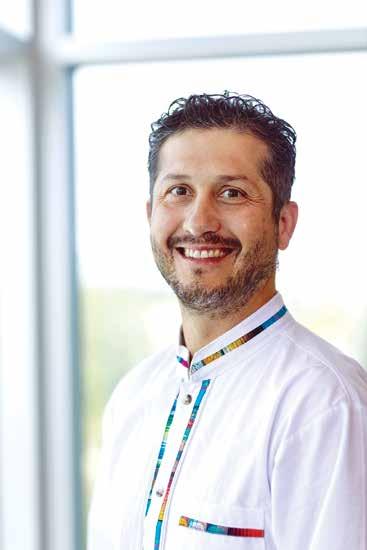
Mi motivación para postularme para la Asamblea de Anchorage son mis cuatro hijos. Veo la dirección a la que nuestra ciudad se dirige, y no estoy contento con el futuro que veo para ellos. Nuestros líderes juegan políticas e impulsan agendas. Quiero que la ciudad funcione como un negocio. Tiene que ser y manejarse de manera eficiente y debe darse cuenta de que la carga del impuesto a la propiedad en las familias de Anchorage es significativa. Mi deseo es abogar por aquellos que han tratado de comunicar las mejores ideas y soluciones para la comunidad, pero se han encontrado con una falta de interés por parte de nuestro liderazgo actual de la ciudad.
2. ¿Cómo crees que la diversidad afecta a Alaska?
Creo que la diversidad ofrece oportunidades únicas, y mi distrito, East Anchorage - Distrito 5, es hogar de algunas de las escuelas más diversas de Estados Unidos. También entiendo que con la diversidad vienen los desafíos, las barreras lingüísticas y culturales, y otros elementos que pueden contribuir a mal entendidos. Sin embargo, elijo creer que nuestra ciudad puede tener una vida saludable y próspera, una economía y un futuro brillante para todos en nuestra comunidad.
3. ¿Cómo apoyarías a la comunidad BIPOC de Anchorage?
Primero, quiero escuchar. Reconozco que no soy un experto en entender todas las ne-
DISTRICT 5 - SEAT I - EAST ANCHORAGE
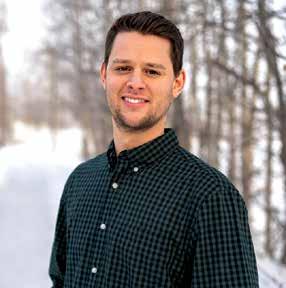
s pencer M oore
1. What motivated you to run for office?
My motivation for running for the Anchorage Assembly is my four children.
I see the direction our city is headed, and I’m not pleased with the future that I see for them. Our leaders are playing politics and pushing agendas. I want the city to run like a business. It needs to be efficient, run lean, and realize the property tax burden on Anchorage families is significant. My desire is to advocate for those who have tried to communicate the best ideas and solutions for the community but have been met with a lack of interest from our current city leadership.
2. How do you think diversity impacts Alaska?
I believe diversity provides unique opportunities, and my district, East Anchor-
cesidades de cada comunidad. Durante mi campaña, he tenido el privilegio de atender la Cumbre de Negocios Negros, reunirme con los líderes tribales polinesios / samoanos, atender una iglesia hmong y una iglesia con rusos, ucranianos y otras naciones eslavas. Cuando me reuní con estas personas, me interesé por escuchar sus preocupaciones y comprender los problemas que son importantes para ellas. Ningún problema es insignificante cuando se refiere al sustento de las personas. Mi objetivo durante esta campaña ha sido escuchar a nuestras comu-
age - District 5, is home to some of the most diverse schools in America. I also understand that with diversity comes challenges, language and cultural barriers, and other elements that can contribute to misunderstanding. However, I choose to believe that our city can have a healthy, thriving economy and a bright future for everyone in our community.
3. How would you support Anchorage’s BIPOC community?
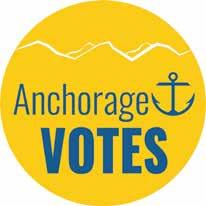
First, I want to listen. I acknowledge I am not an expert in understanding all the needs of each community. During my campaign, I’ve had the privilege to attend the Black Business Summit, meet with the Polynesian/Samoan tribal leaders, attend a Hmong church, and attend a church with Russians, Ukrainians, and other Slavic nations. As I met with these peo-
nidades y entender cómo puedo ayudar mejor en función de mi influencia y capacidad de posición para afectar el cambio.
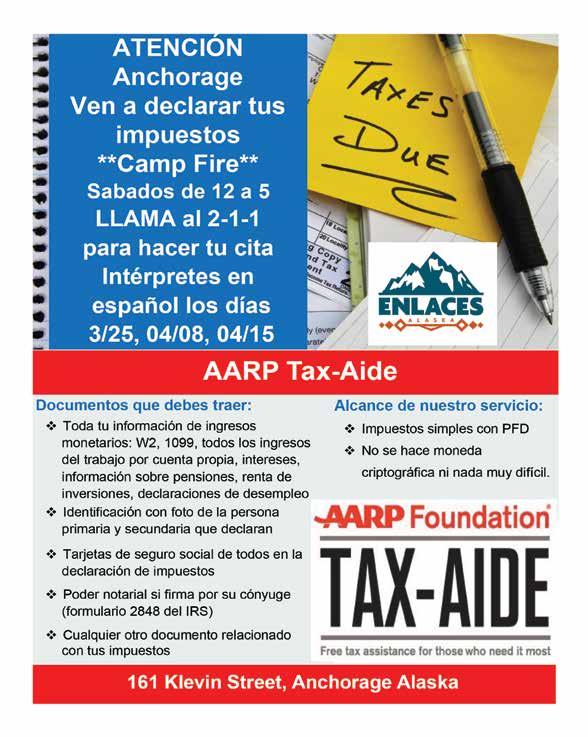
4. ¿Crees que la religión debería jugar un papel en la política? Si es así, ¿cuál? Creo que la religión puede desempeñar un papel en la política, y la buena moral proviene de nuestra comunidad basada en la fe. No creo que sea el trabajo del gobierno elegir “cuál”. Creo en América. Es la elección de los ciudadanos adorar donde elijan y toda creencia religiosa debe ser respetada.
ple, I attempted to hear their concerns and understand the issues that are im portant. No issue is insignificant when it concerns people’s livelihood. My goal during this campaign has been to listen to our community and understand how I can best help, based on my influence and ability to positively affect change.
4. Do you think religion should play a role in politics? If so, which one?
I do think religion can play a role in politics, and good morals come from our faith-based community. I do not think it is the government’s job to choose “which one.” I believe in America. It is the citizens’ choice to worship where they choose and to be respectful of all religious beliefs.
docphillmendoza@gmail.com // www.docphill.com @pmendoza.md4u

SOL DE MEDIANOCHE ANCHORAGE, ALASKA 4 MARCH 2023
- Consultorio abierto en nuestra nueva dirección - Aceptamos pacientes nuevos
3001 Porcupine Dr., Suite 19, Anchorage, AK 99501 (907) 206-9615 / Fax 833-989-2514
Construyendo relaciones y promoviendo la salud, un paciente a la vez.
and promoting health, one patient at a time.
Building relationships
GEORGE MARTINEZ
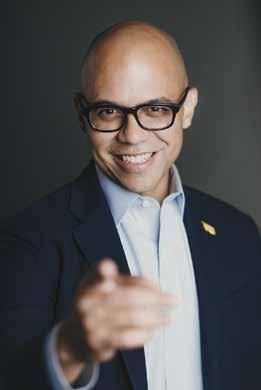
1. ¿Qué te motivó a postularte para un cargo público?
Me postulo para traer liderazgo experimentado y de sentido común a la Asamblea. Mi visión es una ciudad conectada, segura y próspera donde las empresas tengan éxito, nuestra economía crezca, los vecindarios florezcan y nuestras familias sean saludables y exitosas. Servir en la Asamblea también se trata de defender East Anchorage. El año pasado, defendí los derechos constitucionales de los residentes de East Anchorage como demandante contra la redistribución ilegal de distritos de Muldoon con Eagle River. Luego, como presidente del Consejo Comunitario del Noreste, organicé la respuesta comunitaria al desastroso campamento para personas sin hogar en Centennial Park.
2. ¿Cómo crees que la diversidad afecta a Alaska?
La organización de Bridge Builders (constructores de puentes) de Anchorage imaginaron a Anchorage como la primera ciudad sin prejuicios. Esto implica la existencia de desafíos a esa visión y el optimismo de alcanzarla. Como ex Enviado Cultural del Departamento de Estado, sé que la diversidad nos fortalece. ¡Esta es una de las razones por las que estoy orgulloso de postularme para representar al distrito de la Asamblea con las dos mejores escuelas secundarias culturalmente diversas de la nación, Bettye Davis East Anchorage y Bartlett! Podemos lograr una conectividad más profunda, un entendimiento mutuo y un crecimiento económico al abrazar la diversidad y garantizar la igualdad de protección para todos ante la ley, especialmente
para los miembros de la comunidad subrepresentados e históricamente marginados.
3. ¿Cómo apoyarías a la comunidad BIPOC de Anchorage?
Como miembro activo de la comunidad BIPOC, estoy familiarizado con muchos problemas y oportunidades que enfrenta la comunidad en Anchorage. Si soy elegido, continuaré presentándome, escuchando y colaborando activamente en políticas sustantivas que mejoren el acceso y los resultados equitativos para los miembros de la comunidad BIPOC. Mi visión para crecimiento económico ayudará a crear oportunidades para todos.
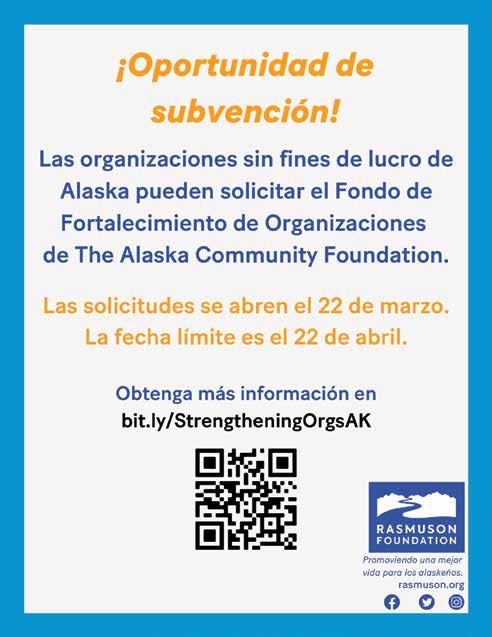
4. ¿Crees que la religión debería jugar un papel en la política? Si es así, ¿cuál? Todas las instituciones organizadas de la sociedad civil, incluidas las iglesias, desempeñan un papel en la política. Sin embargo, creo en la separación de la iglesia y
DISTRICT 5 - SEAT I - EAST ANCHORAGE
G eor G e M A r T inez
1. What motivated you to run for office?
I’m running to bring experienced, common-sense leadership to the Assembly. My vision is for a connected, safe, and thriving city where businesses succeed, our economy grows, neighborhoods flourish, and our families are healthy and successful. Serving in the Assembly is also about standing up for East Anchorage. Last year, I defended the constitutional rights of the residents of East Anchorage as a plaintiff against the illegal redistricting of Muldoon with Eagle River. Then as President of the Northeast Community Council, I organized the community response to the disastrous homeless camp at Centennial Park.
2. How do you think diversity impacts Alaska?
The Bridge Builders of Anchorage envisioned Anchorage as the first city without prejudice. This implies the existence of both, challenges to that vision and the optimism of achieving it. As a former Cultural Envoy for the State Department, I know that diversity strengthens us. This is one reason I am proud to run to represent the Assembly district with the nation’s top two culturally diverse high schools, Bettye Davis East Anchorage and Bartlett! We can achieve
el estado y el derecho de todas las personas a tener libertad de religión. Como persona de fe, me guío por los valores de una comunidad amada donde todos son bien-
deeper connectivity, mutual understanding, and economic growth by embracing diversity and ensuring equal protection under the law for everyone, especially underrepresented and historically marginalized community members.
3. How would you support Anchorage’s BIPOC community?
As an active member of the BIPOC community, I am familiar with many issues and opportunities facing the community in Anchorage. If elected, I will continue to show up, listen, and actively collaborate on substantive policies that improve access and equitable outcomes for the members of the BIPOC community. My vision of economic growth will help create opportunities for everyone.

4. Do you think religion should play a role in politics? If so, which one? All organized civil society institutions, including churches, play a role in politics. However, I believe in the separation of church and state and the right of all people to have freedom of religion. As a person of faith, I am guided by the values of a beloved community where everyone is welcome and can participate in every part of society regardless of race, creed, religion, personal beliefs, identity, or social status.
venidos y pueden participar en cada parte de la sociedad, independientemente de su raza, credo, religión, creencias personales, identidad o estatus social.
MARCH 2023 5 WWW.SOLDEMEDIANOCHENEWS.ORG
DISTRITO 5 - ASIENTO I - EAST ANCHORAGE
DISTRITO 5, ASIENTO H - EAST ANCHORAGE KAREN BRONGA DISTRICT 5, SEAT H - EAST ANCHORAGE ron GA

1. ¿Qué te motivó a postularte para un cargo público?
Me postulo porque amo East Anchora ge, y porque es mi hogar. No viviría en ningún otro lugar. Pero a veces este lado de la ciudad recibe la peor parte cuando se trata de políticas de la ciudad, y me postulo para ser una voz fuerte para East Anchorage. Crecer en el lado Este me ha dado un gran orgullo por el área y una comprensión única de su his toria. Recuerdo cuando no teníamos sende ros ni piscinas. Ha costado mucho trabajo llegar a donde estamos hoy, y tengo la intención de continuar ese trabajo. He servido a la comunidad como maestra, padre de familia, miembro del consejo comunitario, miembro del comité de senderos y entrenador voluntario de esquí. Como educador y funcionario del consejo comunitario, he aprendido la importancia crítica de escuchar, encontrar un terreno común y confiar en el proceso público. Como asambleísta, espero centrarme en el apoyo a las escuelas, la salud y la seguridad, y la calidad de vida de los residentes de Anchorage.
2. ¿Cómo crees que la diversidad afecta a Alaska?
La diversidad de todo tipo es un activo enorme para Anchorage y para nuestro estado en general. East Anchorage es una de las partes con mayor diversidad racial y socioeconómica de la ciudad, y esta área a menudo recibe la peor parte cuando se trata de la política de la ciudad. Deberíamos trabajar para celebrar las muchas comunidades de Anchorage y unirlas.
3. ¿Cómo apoyarías a la comunidad BIPOC de Anchorage?
Como miembro de la asamblea, una de mis principales prioridades sería elevar las voces diversas en nuestra comunidad. Aunque puedo apoyar, en última instancia, necesitamos elegir más líderes de la comunidad BIPOC para elevar esas voces. Mientras tanto, he escuchado algunos problemas específicos de los miembros de la comunidad:
- Algunas de nuestras comunidades más diversas tienen las peores rutas no motorizadas. Todos necesitamos poder caminar o andar en bicicleta al trabajo de manera segura: es un problema de cambio climático y una cuestión de equidad.
- Necesitamos invertir en nuestras escuelas públicas y financiar el prekínder universal.
- Necesitamos asegurarnos de que tenemos servicios de traducción adecuados para nuestras comunidades de habla no inglesa.
4. ¿Crees que la religión debería jugar un papel en la política? Si es así, ¿cuál? Si bien la fe puede proporcionar un marco ético para los funcionarios electos individuales, nuestra responsabilidad es escuchar y servir a los electores, y actuar de acuerdo con nuestro marco legal estatal y municipal.
1. What motivated you to run for I’m running because I love East Anchorage, and because it’s my home. I wouldn’t live anywhere else. But sometimes the East side gets the short end of the stick when it comes to city policies, and I’m running to be a strong voice for East Anchorage. Growing up on the East side has given me great pride for the area and a unique understanding of its history. I remember when we didn’t have trails or pools. It’s taken a lot of hard work to get to where we are today, and I intend to continue that work.
I have served the community as a teacher, parent, community council member, trail committee member, and volunteer ski coach. As an educator and community council officer, I have learned the critical importance of listening, finding common ground and trusting the public process. As an assembly person, I hope to focus on support of schools, health and safety, and quality of life for Anchorage residents.
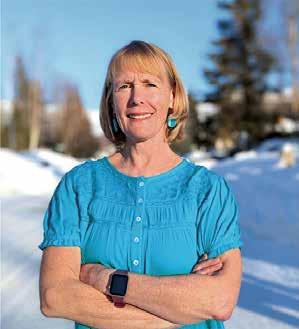
2. How do you think diversity impacts Alaska?
Diversity of all kinds is an enormous asset for Anchorage and for our state as a whole. East Anchorage is one of the most racially and socioeconomically diverse parts of the city, and this area often gets the short end of the stick when it comes to city policy. We should be working to celebrate Anchorage’s many communities and bring them together.
3. How would you support Anchorage’s BIPOC community?
As an assembly member, one of my top priorities would be to elevate diverse voices in our community. Although I can be supportive, ultimately, we need to be electing more leaders from the BIPOC community to elevate those voices. In the meantime, I have heard a few specific issues from community members:
- Some of our most diverse communities have the worst nonmotorized routes. We all need to be able to walk or bike to work safely - it’s a climate change issue and an equity issue.
- We need to be investing in our public schools and funding universal pre-K.
- We need to make sure that we have adequate translation services for our non-English-speaking communities.
4. Do you think religion should play a role in politics? If so, which one?
While faith may provide an ethical framework for individual elected officials, our responsibility is to listen to and serve constituents, and to act in accordance with our state and municipal legal framework.
DISTRITO 5, ASIENTO H - EAST ANCHORAGE LEIGH SLOAN
1. ¿Qué te motivó a postularte para un cargo público?
Dí un paso adelante porque quiero dar una voz fresca y un equilibrio a las perspectivas que se ofrecen en la Asamblea. Soy educadora y madre de 3 hijos. Me encanta Anchorage y quiero ayudar a nuestra ciudad a enfocarse en la resolución de problemas sobre la puntuación política. Esta carrera se trata de honrar verdaderamente tu voz y comprometerte a encontrar y ejecutar soluciones reales que te beneficien.
2. ¿Cómo crees que la diversidad afecta a Alaska?
Alaska es muy diversa racial y políticamente, particularmente en East Anchorage. Es una de las cosas que me encanta de vivir aquí. Existen obstáculos como las barreras lingüísticas y los desafíos en la educación. Estoy agradecida de que muchos de los residentes de Anchorage vengan de diferentes lugares del mundo y, en general, trabajamos muy bien juntos como comunidad. Sin embargo, puede tomar años o décadas para que los grupos de personas recién llegadas prosperen económicamente.
3. ¿Cómo apoyarías a la comunidad BIPOC de Anchorage?
Dos desafíos principales en las comunidades BIPOC son las barreras económicas y las barreras a la educación. Las barreras a la educación existen cuando limitamos a las familias a una opción donde los estudiantes pueden ser educados. Todos los estudiantes tienen diferentes necesidades,
DISTRICT 5, SEAT H - EAST ANCHORAGE
l ei G h s lo A n
1. What motivated you to run for office?
I stepped up because I want to provide a fresh voice and balance to the perspectives being offered on the Assembly. I am a mom of 3 and an educator. I love Anchorage and want to help our city focus on problem-solving over political point-scoring. This race is about truly honoring YOUR voice and committing to finding and executing real solutions that benefit YOU.
2. How do you think diversity impacts Alaska?
Alaska is very racially and politically diverse, particularly in East Anchorage. It is one of the things I love about living here. There are roadblocks such as language barriers and challenges in education. I am thankful that so many of Anchorage residents come from different places around the world and, generally, we do a great job of working together as a community. However, it can take years or decades for newly arriving people groups to rise economically.
3. How would you support Anchorage’s BIPOC community?
Two major challenges in BIPOC communities are economic barriers and barriers to education. Barriers to education exist when we limit families to one
diferentes niveles de apoyo y diferentes valores culturales. Eso significa que la idea de que la educación debe ser impartida de la misma manera debe desaparecer. Apoyo el derecho de los padres a elegir entre varias opciones de escolarización para sus familias, independientemente del código postal, lo que nivela el campo de juego para el avance económico futuro. La vivienda es otra pieza del rompecabezas económico que afecta la salud y el bienestar de las comunidades BIPOC. Necesitamos proteger a las familias de ser sobrecargadas por los impuestos a la propiedad que obstaculizan su capacidad de invertir en sus propias casas. Debemos encontrar formas de invertir en opciones de vivienda asequible que parecen estar desapareciendo de Anchorage.
4. ¿Crees que la religión debería jugar un papel en la política? Si es así, ¿cuál? La religión ofrece una visión del mundo, y los asuntos de la visión del mundo siempre afectan la política. Ya sea que te llames religioso o no, tienes una visión del mundo, y afectará tus puntos de vista políticos. Las visiones religiosas del mundo no deben ser discriminadas solo porque tienen un origen religioso. Históricamente, ha sido la visión religiosa del mundo la que nos ha hecho valorarnos y honrarnos unos a otros, incluso a aquellos que tienen diferentes perspectivas.
choice for where students may be educated. All students have different needs, different levels of support, and different cultural values. That means that the one-size-fits-all idea of education needs to go. I support the right of parents to choose from various schooling options for their families regardless of zip code, which levels the playing field for future economic advancement.
Housing is another piece to the economic puzzle that affects the health and well-being of BIPOC communities. We need to protect families from being overburdened by property taxes that hamper their ability to invest in homes of their own. We must find ways to invest in affordable housing options that seem to be disappearing from Anchorage.
4. Do you think religion should play a role in politics? If so, which one? Religion offers a worldview, and world view matters always affect politics. Whether or not you call yourself religious, you have a worldview, and it will affect your political viewpoints. Religious worldviews should not be discriminated against just because they happen to have a religious origin. Historically, it has been the religious world view that has caused us to value and honor one another, even those who hold differing perspectives.
SOL DE MEDIANOCHE ANCHORAGE, ALASKA 6 MARCH 2023
MIKEL INSALACO
1. ¿Qué te motivó a postularte para un cargo público?
A lo largo de mi carrera, he adquirido experiencia diversa, he dirigido proyectos comunitarios galardonados y he desarrollado un sólido conjunto de habilidades en desarrollo de negocios y comunicaciones; Creo que estas habilidades se pueden utilizar de manera efectiva para abordar los complejos problemas sociales que enfrentan nuestras comunidades. Nací y crecí en Anchorage y como padre y residente de Anchorage toda mi vida, tengo un interés personal en el éxito y la prosperidad de nuestra comunidad y mi familia. Estoy ansioso por trabajar con la comunidad para crear un cambio positivo y mejorar las vidas de todos los residentes.
2. ¿Cómo crees que la diversidad afecta a Alaska?
La diversidad de Alaska es uno de sus mayores activos y Anchorage, en particular, es una de las ciudades y distritos escolares más diversos de los Estados Unidos. Esta diversidad ha ayudado a impulsar la innovación y el progreso en todos los aspectos de la vida en Alaska. Además, Alaska tiene un sólido legado de promoción de la igualdad de derechos y oportunidades para todos, habiendo sido el primer estado en adoptar una ley de derechos civiles que protege a los ciudadanos de la discriminación por motivos de raza, color u origen nacional. Como candidato a la Asamblea, estoy comprometido a continuar este legado.
3. ¿Cómo apoyarías a la comunidad BIPOC de Anchorage?
Como candidato para la Asamblea de Anchorage, me comprometo a garantizar que la comunidad BIPOC tenga un asiento en la mesa y que sus preocupaciones sean escuchadas y abordadas. Uno de esos problemas es la implementación de cámaras corporales, que las organizaciones BIPOC han defendido, pero se han retrasado a pesar de haber sido pagadas. Este retraso refleja una falta de respuesta a las necesidades y preocupaciones de la comunidad BIPOC. Al abordar las necesidades y preocupaciones de la comunidad BIPOC, podemos trabajar hacia una ciudad más equitativa e inclusiva para todos los residentes.
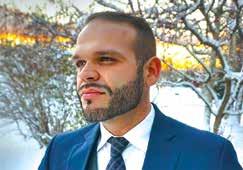
4. ¿Crees que la religión debería jugar un papel en la política?
Si es así, ¿cuál?
La religión y los sistemas de creencias personales siempre afectan la toma de decisiones, pero no deben ser la única justificación para la creación o aplicación de la ley. Las personas son elegidas en base a sus principios, valores y perspectivas, y es necesario una mesa diversa y equitativa para la discusión. La religión y los sistemas de creencias fundamentales deben ser respetados y considerados, pero las leyes deben crearse para el beneficio de todos y no solo de un grupo o sistema de creencias en particular.
DISTRICT 6 - SEAT K - EAST ANCHORAGE
M i K el i ns A l A co
1. What motivated you to run for office?
Throughout my career, I have gained diverse experience, led award-winning community projects, and developed a strong skill set in business development and communications; I believe that these skills can be utilized effectively to tackle the complex social problems facing our communities. I was born and raised in Anchorage and as a father and lifelong resident, I have a personal stake in the success and prosperity of our community and my family. I am eager to work with the community to create positive change and improve the lives of all residents.
2. How do you think diversity impacts Alaska?
Alaska’s diversity is one of its greatest assets and Anchorage, in particular, is one of the most diverse cities and school districts in the United States. This diversity has helped drive innovation and progress in all aspects of life in Alaska. Additionally, Alaska has a strong legacy of promoting equal rights and opportunities for all, having been the first state to adopt a civil rights law protecting citizens from discrimination based on race, color, or national origin. As an assembly candidate, I’m committed to continuing this legacy.
3. How would you support Anchorage’s BIPOC community?
As a candidate for the Anchorage Assembly, I am committed to ensuring that the BIPOC community has a seat at the table and that their concerns are heard and addressed. One such issue is the implementation of body cameras, which BIPOC organizations have advocated for, but have been delayed despite being paid for. This delay reflects a lack of responsiveness to their needs and concerns. By addressing the needs and concerns of the BIPOC community, we can work towards a more equitable and inclusive city for all residents.
4. Do you think religion should play a role in politics? If so, which one? Religion and personal belief systems always impact decision-making, but they should not be the sole justification for the creation or enforcement of law. People are elected based on their principles, values, and perspectives, and it is necessary for a diverse and equitable table for discussion. Religion and core belief systems should be respected and considered, but laws must be created for the benefit of all and not just one particular group or belief system.
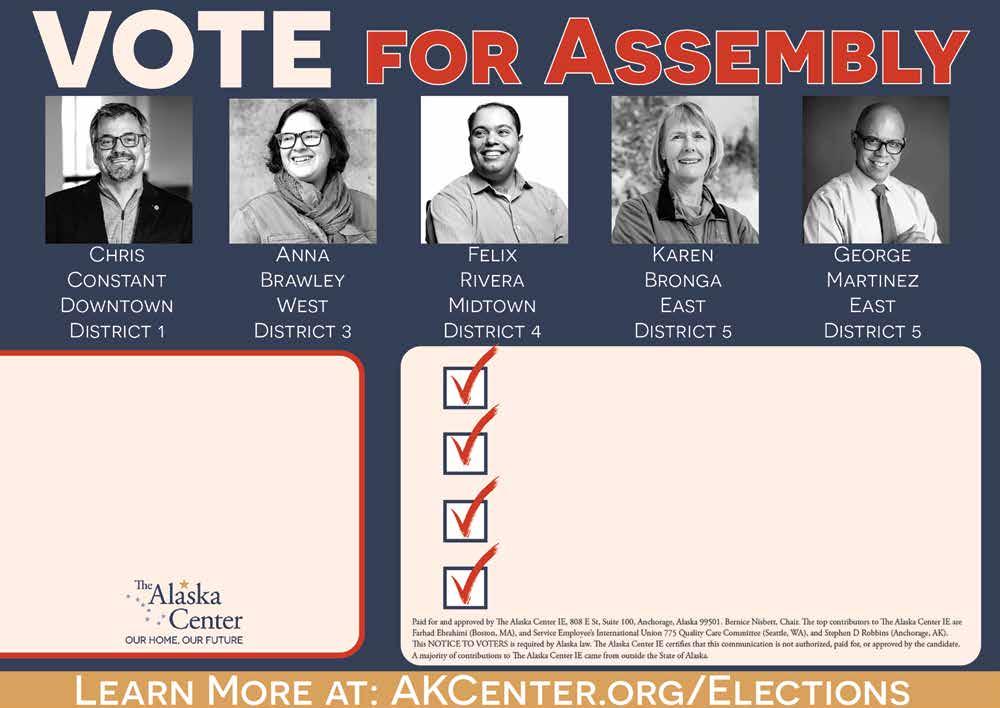
MARCH 2023 7 WWW.SOLDEMEDIANOCHENEWS.ORG
DISTRITO 6 - ASIENTO K - EAST ANCHORAGE
Líderes
Defensores comunitarios con experiencia extensiva en servicio público Abogan por una vivienda asequible y comunidades seguras Apoyan una economía próspera y sustentable para todo Anchorage ¡VOTA ANTES DEL 4 DE ABRIL!
comunitarios comprometidos para La Asamblea
ESCOLAR – ASIENTO C DAVE DONLEY
1. ¿Qué te motivó a postularte para un cargo público?
Cuando me postulé por primera vez para la Junta Escolar, nuestros gemelos estaban en sexto grado. Se graduarán en 2026 y necesitamos que las escuelas de Anchorage sean lo mejor que puedan ser para ellos y para todos los niños de Anchorage. Como padre y exsenador estatal con un historial de experiencia trabajando con temas de educación y finanzas, he sido una voz para el sentido común en la Junta Escolar. He trabajado para priorizar las necesidades del aula, reducir los costos administrativos, aumentar la participación de los padres, promover el patriotismo y mejorar el plan de estudios. Durante mi tiempo en la Junta Escolar, enfrentamos los desafíos únicos de un gran terremoto que cerró las escuelas y la pandemia de Covid. Continuaré usando mis años de experiencia en liderazgo legislativo para luchar por la parte justa de los fondos estatales de educación de Anchorage. Continuaré abogando por expandir el uso actualmente limitado del currículo tradicional exitoso comprobado para matemáticas y lectura. Eso incluye Saxon Math y Spaulding Reading.
2. ¿Cómo te asegurarías de que los estudiantes BIPOC de Anchorage reciban un apoyo equitativo a través del proceso de aprendizaje en nuestras diversas escuelas?
Creo que las escuelas públicas son la base de la grandeza de Estados Unidos. Las escuelas deben ser centros de aprendizaje dinámicos con una misión clara y enfocada para preparar a nuestros niños para que sean miembros altamente exitosos de nuestra comunidad y nación en toda su diversidad. Nuestras escuelas deben ayudar a los estudiantes a alcanzar su potencial y eso incluye preparar a los estudiantes para la educación superior y profesional / vocacional. Todos los niños deben recibir oportunidades educativas que les permitan tener éxito en la vida y convertirse en buenos ciudadanos.
3. ¿Crees que la religión debería desempeñar un papel en las escuelas? Si es así, ¿cuál?
Todas las libertades de expresión y religiosas actualmente protegidas constitucionalmente deben ser respetadas por el Distrito Escolar. El ASD debe seguir las reglas proporcionadas por la Corte Suprema de los Estados Unidos y la ley estatutaria. El plan de estudios de las religiones del mundo debe enseñarse en educación cívica. Debe-
SCHOOL BOARD - SEAT C d Ave d onley
1. What motivated you to run for office?
When I first ran for School Board our twins were in sixth grade. They will be graduating in 2026 and we need Anchorage schools to be the best they can be for them and all Anchorage children.
As a parent and former State Senator with a history of experience working with education and finance issues, I have been a voice for common sense on the School Board. I have worked to prioritize classroom needs, reduce administrative costs, increase parental involvement, promote patriotism and improve curriculum. During my time on the School Board, we faced the unique challenges of a major earthquake closing schools, and the Covid pandemic.
I will continue to use my years of legislative leadership experience to fight for Anchorage’s fair share of State education funding. I will continue to advocate for expanding the currently limited use of proven successful traditional curriculum for math and reading. That includes Saxon Math and Spaulding Reading.
2. How would you ensure Anchorage’s BIPOC students are equitably supported through the learning process in our very diverse schools?
I believe the public schools are the foundation of America’s greatness. Schools should be dynamic learning centers with a clear focused mission to prepare our children to be highly successful members of our community and nation in all its diversity. Our schools should help our students fulfill their potential and that includes preparing students for both higher and career/vocational education. All children must be provided educational opportunities that allow them to succeed in life and become good citizens.
3. Do you think religion should play a role in schools? If so, which one? All currently constitutionally protected speech and religious freedoms must be respected by the School District. The ASD should follow the rules provided by the US Supreme Court and statutory law. World Religions curriculum should be taught in civics. We should respect our legally adopted
1. ¿Qué te motivó a postularte para un cargo público?
Quiero hacer una diferencia en mi comunidad y creo que cada voz es importante. Como alguien que ha experimentado pobreza, falta de vivienda, discriminación de género y edad, y abuso, mi perspectiva única debe estar representada en la política, especialmente en la junta escolar. Si bien no tengo experiencia en políticas en el trabajo, mi experiencia de vida y educación guiarán mis decisiones en la formulación de políticas. Me preocupa profundamente el impacto a largo plazo que las decisiones de la junta escolar pueden tener en los estudiantes de BIPOC, aquellos sin hogar, aquellos con discapacidades y aquellos que se identifican como LGBTQIA +.
2. ¿Cómo te asegurarías de que los estudiantes BIPOC de Anchorage reciban un apoyo equitativo a través del proceso de aprendizaje en nuestras diversas escuelas?
Garantizar un apoyo equitativo para los estudiantes BIPOC del Distrito requiere un esfuerzo sostenido e intencional por parte de la junta escolar y del distrito en general. Al priorizar la enseñanza culturalmente re-
SCHOOL BOARD - SEAT C i rene b oll
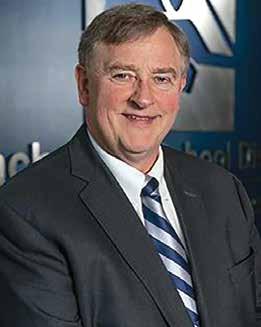
1. What motivated you to run for office?

I want to make a difference in my community and believe every voice is important. As someone who has experienced poverty, homelessness, gender and age discrimination, and abuse, my unique perspective needs to be represented in politics, especially on the school board. While I don’t have onthe-job policy experience, my life experience and education in policy-making will guide my decisions. I care deeply about the long-term impact the school board’s decisions may have on BIPOC students, those experiencing homelessness, those with disabilities, and those
Anchorage’s BIPOC students are equitably supported through the learning process in our very diverse

Ensuring equitable support for the District’s BIPOC students requires a sustained and intentional effort on the part of the school board and the district as a
ceptiva, reclutar y retener maestros diversos, proporcionar recursos y apoyo, e identificar y luego abordar las desigualdades sistémicas, la junta escolar puede ayudar a garantizar que todos los estudiantes tengan la oportunidad de tener éxito.
3. ¿Crees que la religión debería desempeñar un papel en las escuelas?
Si es así, ¿cuál?
Es importante que respetemos el derecho de las personas a practicar la religión. Dicho esto, creo que las escuelas son responsables de proporcionar un entorno de aprendizaje inclusivo y secular que no favorezca ninguna creencia en particular. Los maestros pueden enseñar sobre diferentes religiones como parte del plan de estudios de la clase, pero la información debe presentarse de manera objetiva. Nuestros estudiantes provienen de diferentes orígenes religiosos y culturales, y creo que es irrespetuoso construir políticas y actividades en torno a una creencia en particular. Lograr un equilibrio entre respetar el derecho de una persona a practicar la religión y mantener el aprendizaje secular es crucial para garantizar que los estudiantes se sientan bienvenidos e incluidos en nuestras escuelas.
whole. By prioritizing culturally responsive teaching, recruiting, and retaining diverse teachers, providing resources and support, and identifying and then addressing systemic inequities, the school board can help ensure that all students have the opportunity to succeed.
3. Do you think religion should play a role in schools? If so, which one? It’s important that we respect individuals’ right to practice religion. That said, I believe schools are responsible for providing an inclusive and secular learning environment that does not favor any particular belief. Teachers can teach about different religions as part of the class curriculum, but the information should be presented in an objective manner. Our students come from different religious and cultural backgrounds, and I believe it is disrespectful to build policies and activities around one particular belief. Striking a balance between respecting a person’s right to practice religion, and maintaining secular learning is crucial for ensuring students feel welcome and included in our schools.
SOL DE MEDIANOCHE ANCHORAGE, ALASKA 8 MARCH 2023
JUNTA
Dave Donley Irene Boll
MARK ANTHONY COX
1. ¿Qué te motivó a postularte? Tengo una familia a la que quiero se eduque para que dominen la lectura, la escritura y las matemáticas junto con compañeros de clase a los que se les ofrece la misma oportunidad. Tengo un hogar en el que no quiero ver más impuestos si mis impuestos van a las escuelas que no enseñan a los niños a ser competentes en lectura, escritura y matemáticas.
2. ¿Cómo te asegurarías de que los estudiantes BIPOC de Anchorage reciban un apoyo equitativo a través
del proceso de aprendizaje en nuestras diversas escuelas?
Para mí, ser elegido miembro de la junta escolar sería inspirador para la comunidad BIPOC.
3. ¿Crees que la religión debería desempeñar un papel en las escuelas? Si es así, ¿cuál?
Creo que los buenos hábitos deben desempeñar un papel en las escuelas, buenos hábitos de estudio, buenos hábitos de salud mental, buenos hábitos de salud y buenos hábitos nutricionales.
SCHOOL BOARD - SEAT D M
1. What motivated you to run for office?
I have a family that I want to be educated to proficiency in reading, writing, and math alongside classmates offered the same opportunity. I have a home that I do not want to see more taxes on if my taxes are going to the schools that do not teach kids to be proficient in reading, writing, and math.
2. How would you ensure Anchorage’s BIPOC students are
equitably supported through the learning process in our very diverse schools?
For me to be elected as a school board member would be inspirational to the BIPOC community.

3. Do you think religion should play a role in schools? If so, which one? I believe good habits should play a role in schools, good study habits, good mental health habits, good health habits, and good nutritional habits.
Se avecinan elecciones críticas The Critical Elections Ahead
POR JENNY-MARIE STRYKER, DIRECTORA POLÍTICA, THE ALASKA CENTER
Lo que está en juego nunca ha sido tan significativo para Anchorage: estamos en medio de una crisis plagada de acritud, discordia e incompetencia incitada por el alcalde.
A estas alturas, es posible que haya leído varios artículos de noticias que cubren las historias de la oficina del alcalde: acusaciones de trato ilegal a los empleados, prácticas de contratación poco éticas, y todos estamos viviendo los retrasos masivos del servicio de invierno más básico de remoción de nieve. La disfunción administrativa nos afecta a todos los que vivimos en Anchorage, y no es lo que el compromiso y la compasión figuran en el servicio público. Es por eso por lo que es tan crucial que Anchorage mantenga una mayoría en la Asamblea que actúe como un control medido y necesario sobre las acciones de la oficina del alcalde.
Este año, hay elecciones consecutivas de la Asamblea en todos los distritos del municipio, elecciones de la junta escolar (todos los escaños de la junta escolar son “en general”, lo que significa que cubren toda la ciudad en lugar de estar separados en distritos) e importantes propuestas de votación y bonos municipales. Este año, el Alaska Center se enorgullece de respal-
dar a cinco candidatos sobresalientes para la Asamblea de Anchorage que ya están profundamente comprometidos con este trabajo. Chris Constant para Downtown Anchorage (Distrito 1 asiento B) y Felix Rivera para Midtown Anchorage (Distrito 4 Asiento G) son titulares que han demostrado una y otra vez que son entusiastas y están comprometidos a servir a Anchorage.

Anna Brawley para West Anchorage (Distrito 3 Asiento E), Karen Bronga para East Anchorage (Distrito 5 Asiento H) y George Martínez para East Anchorage (Distrito 5 Asiento I) son nuevos candidatos que muestran su compromiso de servir a sus vecinos a través de consejos comunitarios, en escuelas y como voluntarios.
Usted tiene la oportunidad de apoyar a los candidatos que apoyan el aire y el agua limpios, las comunidades saludables y una democracia fuerte. Esos candidatos, a su vez, tendrán la oportunidad de responsabilizar al alcalde, promulgar políticas de sentido común como la licencia por razones de familia para los empleados municipales y hacer que Anchorage sea mejor para todos nosotros. Lo que está en juego en esta elección es demasiado significativo para quedarse fuera. Recibirá su boleta a mediados de marzo; asegúrese de devolverla antes del 4 de abril. ¡Vaya a akcenter.org/elections si tiene alguna pregunta!
BY JENNY-MARIE STRYKER, POLITICAL DIRECTOR, THE ALASKA CENTER
The stakes have never been higher for Anchorage: We are in the midst of a Mayoral crisis rife with acrimony, discord, and incompetence.
By now, you might have read several news articles covering the stories from the mayor’s office–accusations of unlawful treatment of employees, unethical hiring practices, and we all know about the massive delays of the most basic winter service of snowplowing. The administrative dysfunction affects all of us who live in Anchorage, and it is not what commitment and compassion look like in public service. That’s why it’s so crucial that Anchorage maintains an Assembly majority that will act as a measured and necessary check on the actions of the mayor’s office.
This year, there are consequential Assembly elections in every district in the municipality, school board elections (all school board seats are “at large,” meaning they cover the whole city instead of being separated into districts), and important ballot propositions and bonds.
This year, The Alaska Center is proud to endorse five outstanding candidates for
Anchorage Assembly who are already deeply invested in this work. Chris Constant for Downtown Anchorage (District 1 seat B) and Felix Rivera for Midtown Anchorage (District 4 Seat G) are incumbents who have proven time and time again that they are passionate and committed to serving Anchorage. Anna Brawley for West Anchorage (District 3 Seat E), Karen Bronga for East Anchorage (District 5 Seat H), and George Martinez for East Anchorage (District 5 Seat I) are new candidates who show their commitment to serving their neighbors through community councils, in schools, and as volunteers.
You have the opportunity to support candidates who support clean air and water, healthy communities, and a strong democracy. Those candidates, in turn, will have the opportunity to hold the mayor accountable, enact common-sense policies like family leave for municipal employees, and make Anchorage better for all of us. The stakes of this election are too high to sit out. You’ll receive your ballot in midMarch; make sure to return it by April 4th. Go to akcenter.org/elections if you have any questions!
MARCH 2023 9 WWW.SOLDEMEDIANOCHENEWS.ORG
JUNTA ESCOLAR - ASIENTO D
A r K A n T hony c ox
Alaska Women Ascend empodera a las mujeres para postularse a un cargo público
POR CAMPBELL SMALL
Según un informe del Center for Effective Law Making, creado por las profesoras Jennifer L. Lawless y Richard L. Fox en 2021, los hombres tienen un 18% más de probabilidades de considerar postularse para un cargo público que las mujeres. Dos temas principales reflejados en su informe son que las mujeres, en promedio, son menos propensas a pensar que están calificadas para ocupar cargos en comparación con los hombres, y es menos probable que otros les digan que son buenas candidatas en comparación con los hombres. Estos factores llevan a las mujeres a ser menos ambiciosas en su búsqueda de postularse, causando la “brecha de ambición”.
Algunos pueden preguntarse por qué este problema es importante. Swanee Hunt, ex diplomática y directora fundadora del Programa de Mujeres y Políticas Públicas de la Escuela Kennedy de Harvard, señala que cuando las mujeres ocupan cargos públicos: hay una disminución en el conflicto entre países, una disminución en los niveles de corrupción, hay un aumento en la competitividad económica y un aumento en la legislación socialmente consciente. El mundo en el que vivimos está lleno de conflictos, polarización y necesidad de cambio. Si los datos sugieren que las mujeres mejorarán estas cosas, entonces elegirlas tiene sentido.
Una organización dedicada a aumentar el número de mujeres en el gobierno es Alaska Women Ascend (AWA), cuya misión es capacitar y empoderar a mujeres de diversas comunidades para que se postulen para un cargo público. Para comprender mejor la organización, entrevisté a Kay Brown, la actual vicepresidenta.
Según Brown, la idea de este proyecto comenzó cuando sus amigas comenzaron a discutir cómo lograr que más mujeres progresistas ocupen cargos públicos después de las elecciones presidenciales de 2016. Eran conscientes de que en Alaska el número de mujeres en la legislatura no es proporcional al número de hombres. Estaban conscientes del problema y motivadas para hacer cambios. De estas conversaciones surgió la idea de crear lo que se convertiría en Alaska Women Ascend, un programa de capacitación para guiar a las mujeres progresistas sobre cómo postularse para un cargo público.
El programa de hoy consta de ocho sesiones de capacitación de cuatro horas. A menudo, las capacitaciones son dirigidas por mujeres que son líderes en política: profesionales de campaña, funcionarias electas y gerentes. Estas profesionales ofrecen voluntariamente su tiempo porque creen en esta misión y en la necesidad de cambio. El programa está abierto a personas que no se identifican como hombres y que son: pro-elección, pro-derechos LGBTQ+, pro-unión, anti-racista, pro-justicia racial y con mentalidad ambiental. En un esfuerzo por ser inclusiva, la organización ha comenzado recientemente a realizar actividades de divulgación a través de organizaciones y eventos cívicos y comunitarios.
Alaska Women Ascend will empower women to run for public office

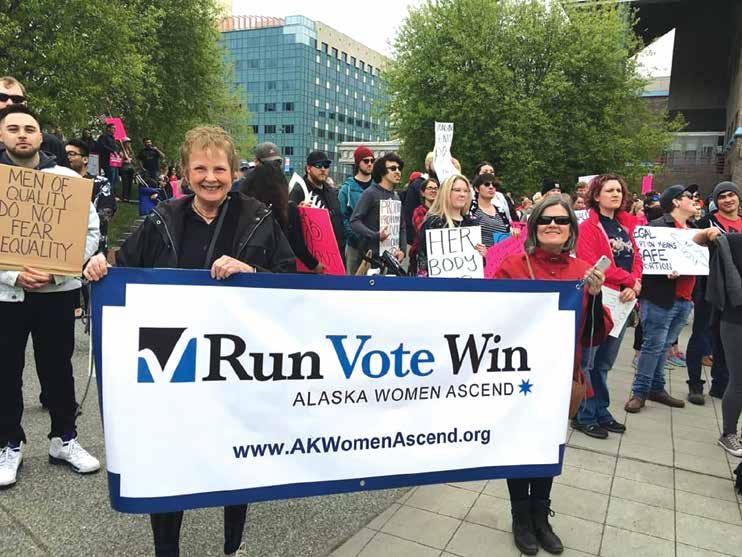 BY CAMPBELL SMALL
BY CAMPBELL SMALL
According to a report from Center for Effective Law Making, created by Professors Jennifer L. Lawless and Richard L. Fox in 2021, men were 18% more likely to consider running for office than women. Two main themes reflected in their report are that women on average are less likely to think that they are qualified to hold office in comparison to men, and they are less likely to be told by others that they are a good candidate when compared to men. These factors lead women to be less ambitious in their pursuit to run for office, causing the “ambition gap.”
Some may wonder why this problem matters. According to Swanee Hunt, a former diplomat and founding director of the Women and Public Policy Program at Harvard Kennedy School, she notes that when women hold public office: there is a decrease in the conflict between countries, a decrease in levels of corruption, there is an increase in economic competitiveness, and an increase in socially conscious legislation. The world we are living in is filled with conflict, polarization, and a need for change. If data suggests that women will improve these things,
La capacitación se centra en los fundamentos de postularse para un cargo, incluidos el hablar en público, diseñar campañas, desarrollar un mensaje y trabajar con los medios de comunicación.
Esta organización está tratando de deshacer el mensaje que reciben las mujeres que sugiere que no deben postularse para un cargo y reemplazarlo con conocimiento que les demuestre que están calificadas
then electing them makes sense.
One organization dedicated to increasing the number of women in governance is Alaska Women Ascend (AWA) whose mission is to train and empower women from diverse communities to run for office. To better understand the organization, I interviewed Kay Brown, the current vice chair of the organization.
According to Brown, the idea for this project started when her friends started discussing how to get more progressive women into office after the 2016 presidential election. They were aware that in Alaska the number of women in the legislature isn’t proportional to the number of men. They were aware of the problem and were motivated to make change. From these conversations came the idea to create what would become Alaska Women Ascend, a training program to guide progressive women on how to run for office.
The program today consists of eight four-hour training sessions. These are taught by women who are leaders in politics often: campaign professionals, elected officials, and managers. These professionals volunteer their time because they believe in this mission and the need for change. The program is open to non-
para hacer el trabajo. Esto está funcionando, según el sitio web de AWA después de completar la capacitación, 16 mujeres fueron elegidas para una variedad de cargos, como senadoras, congresistas y consejo municipal. Muchos más han intentado postularse. Esta organización ha hecho mella, ha cambiado la narrativa y está dando a las mujeres en Alaska la confianza que necesitan para postularse.
male identifying individuals who are: pro-choice, pro-LGBTQ+ rights, prounion, anti-racist, pro-racial justice, and environmentally minded. In an effort to be inclusive, the organization has recently started conducting outreach through civic and community organizations, and events. The training focuses on the fundamentals of running for office including public speaking, campaign design, developing a message, and working with the media.
This organization is attempting to undo the messaging that women receive that suggests that they shouldn’t run for office, and replace it with knowledge that proves to them that they are qualified to do the job. This is working, according to the AWA website after completing the training, 16 women were elected to a variety of positions such as senator, congresswoman, and city council. Many more have tried to run for office. This organization has made a dent, they have changed the narrative, and are giving women in Alaska confidence they need to run for office.
If you would like to get more information or are interested in participating in their program, visit www.akwomenascend.org
Si deseas obtener más información o estás interesada en participar en este programa, visita www.akwomenascend.org
SOL DE MEDIANOCHE ANCHORAGE, ALASKA 10 MARCH 2023
FOTO: ALASKA WOMEN ASCEND FB
Abril: mes nacional de la prevención del abuso infantil
Abril es el Mes Nacional de la Prevención del Abuso Infantil, un momento para crear conciencia sobre el abuso y el abandono infantil y para promover el bienestar de los niños y las familias en todo Estados Unidos. Esta campaña de conmemoración se estableció en 1983, durante la administración Reagan. En aquel entonces, había una creciente preocupación por el número de niños que estaban siendo abusados en los Estados Unidos. Por ejemplo, según la National Children ‘s Alliance, se estima que 3 millones de niños fueron reportados como víctimas de abuso y negligencia en 1981. Este número siguió aumentando en los años siguientes. Por lo tanto, el mes se estableció para aumentar la conciencia pública sobre estos problemas y, desde entonces, ha motivado a las comunidades a tomar medidas contra ellos.
Uno de los símbolos más reconocibles del mes de prevención del abuso infantil es la cinta azul. Según la Pennsylvania Fami ly Support Alliance, este símbolo tiene una historia muy importante. Fue iniciado por Bonnie W. Finney, de Virginia, quién ató una cinta azul a la antena de su auto como una forma de recordar a su nieto, que mu rió como resultado de abuso. La cinta azul se convirtió rápidamente en un símbolo de la prevención del abuso infantil, y ahora es ampliamente reconocida como un símbolo de esperanza y apoyo para las víctimas y sobrevivientes de abuso.
A pesar de los esfuerzos a nivel nacional y estatal, según los datos del Alaska Children’s Trust, el abuso y la negligencia infantil siguen siendo un problema grave en Alaska. En 2020, hubo 9,528 informes de abuso y negligencia infantil en el estado, y se encontró que 2,018 niños eran vícti-
April: National Child Abuse Prevention Month
 BY SDMN
BY SDMN
April is National Child Abuse Prevention Month, a time to raise awareness about child abuse and neglect and to promote the well-being of children and families across the United States. This observance was established in 1983, during the Reagan administration, when April was first declared National Child Abuse Prevention Month.
Back then, there was an increasing concern about the number of children who were being abused and neglected in the United States. For instance, according to the National Children’s Alliance, an estimated 3 million children were reported as victims of abuse and neglect in 1981. This number continued to rise in subsequent years. So, the month was established to increase public awareness of these pressing issues, and ever since, it has motivated communities to take action against it.

One of the most recognizable symbols of child abuse prevention month is the blue ribbon. According to the Pennsylvania Family Support Alliance, this symbol has a very important history. It was started by a grandmother from Virginia named Bonnie W. Finney, who tied a blue ribbon to the antenna of her car as a way to remember her grandson, who died as a result of abuse. The blue ribbon quickly became a symbol of child abuse prevention and is now widely recognized as a symbol of hope and support for victims and survivors of abuse.
According to data from the Alaska Children’s Trust, child abuse and ne-
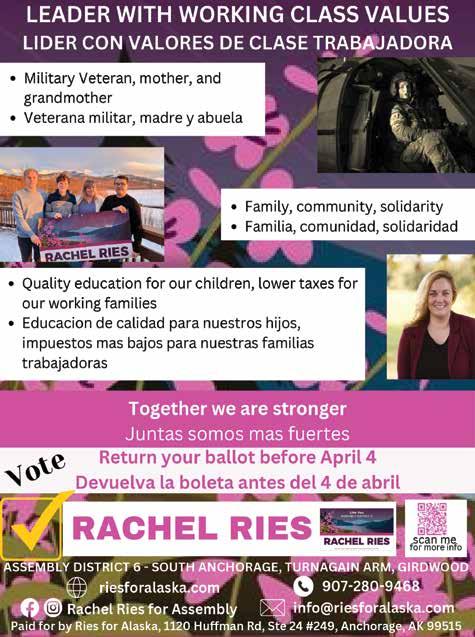
glect remain serious problems in the state. In 2020, there were 9,528 reports of child abuse and neglect in Alaska, and 2,018 children were found to be victims of abuse or neglect. These numbers represent a significant increase from previous years and highlight the need for continued efforts to prevent child abuse and neglect in Alaska. This year Alaska’s Children Trust is continuing its mission of raising awareness and providing solutions to prevent this issue with their GoBlue Day campaign, a day to officially kick off National Child Abuse Prevention Month. Alaskans are encouraged to wear blue, share selfies on social media with the hashtags: #BuildingTogetherAK or #GoBlueDayAK, or use allegorical Zoom and Microsoft Teams backgrounds on March 31st.
ACT will also have opportunities for mini-grants for organizations raising awareness of child abuse, informational materials, and training sessions from topics such as internet safety, and parenting, and social media toolkits. To learn more about it, audiences can visit this website: https://www.alaskachildrenstrust.org/partner-toolkit.
In addition, Sol de Medianoche is collaborating with Alaska Children’s Trust and Enlaces to host the Día del Niño event. After the success of last year’s event, there will be a wide variety of resources and activities for all the family. It will take place at Government Hill Elementary on Saturday, April 29, from 11am to 3pm.
mas de abuso o negligencia. Estas cifras representan un aumento significativo con respecto a años anteriores, y destacan la necesidad de continuar los esfuerzos para prevenir el abuso y la negligencia infantil en Alaska.
Este año, Alaska Children’s Trust continúa su misión de crear conciencia y proporcionar soluciones para prevenir este problema con su campaña GoBlue Day, un día para iniciar oficialmente el Mes Nacional de Prevención del Abuso Infantil. Durante este evento se invita a los habitantes de Alaska a vestirse de azul, compartir selfis en las redes sociales con los hashtags: #BuildingTogetherAK o #GoBlueDayAK o usar fondos alegóricos de Zoom y Microsoft Teams el día 31 de marzo.
ACT también tendrá oportunidades de financiamiento para organizaciones que comparten información para prevenir el abuso infantil, materiales informativos,
capacitaciones sobre temas como la seguridad en Internet y la crianza de los hijos y kits de herramientas de redes sociales. Para obtener más información al respecto, el público puede visitar este sitio web: https://www.alaskachildrenstrust.org/partner-toolkit
Además, Sol de Medianoche está colaborando con Alaska Children’s Trust y Enlaces para organizar un evento del Día del Niño. Después del éxito del evento del año pasado, habrá una amplia variedad de recursos y actividades para toda la familia. Se llevará a cabo en la escuela Government Hill, el sabado 29 de abril de 11am a 3pm.
MARCH 2023 11 WWW.SOLDEMEDIANOCHENEWS.ORG
SDMN
POR
FOTO: ISTOCK
ÓSCAR CHACÓN, CO-FUNDADOR Y DIRECTOR EJECUTIVO DE ALIANZA AMÉRICAS
“Es imprescindible una política migratoria realista”
Joe Biden se acerca a la fase final de su mandato con una deuda pendiente con los inmigrantes. Ganó las elecciones a la Casa Blanca con un discurso amable para ellos y una vez que juró el cargo como presidente lo cambió: “¡Quédense en casa!”, les dijo. Estados Unidos necesita una política migratoria realista para proteger su porvenir y su prosperidad.
POR CARLOS MATÍAS
“Falta coherencia y realismo en la política migratoria de los Estados Unidos”, dice a Sol de Medianoche Óscar Chacón, co-fundador y director ejecutivo de Alianza Américas, “y esto ha sucedido en las últimas décadas, tanto con presidentes republicanos como con presidentes demócratas”.
Óscar Chacón se basa en datos objetivos para afirmar que “este país necesita a los migrantes para seguir siendo una nación fuerte y próspera. A lo largo de la historia, los migrantes siempre hemos representado una gran fuerza laboral y hemos sido generadores de riqueza. Pero nuestros políticos bipartidistas llevan décadas cayendo en la trampa y en la falsedad de un discurso público xenófobo, racista y supremacista”.
Para Chacón, la diferencia entre político republicanos y políticos demócratas es que “los republicanos son más bruscos en sus manifestaciones y muy extremistas, llegando a la xenofobia y el racismo. Pero no hay que olvidar que la peor ley de inmigración en toda la historia de este país la aprobó Bill Clinton, y que el mayor número de deportaciones firmado por un presidente es un récord que ostenta Barack Obama. Los dos, presidentes demócratas”.
Llama la atención el dato que facilita Óscar Chacón sobre Obama, sobre todo
teniendo en cuenta que tras él gobernó este país Donald Trump. “Trump es tosco, grotesco, zafio… Es xenófobo y racista… Pero no deportó a tantos migrantes como Obama”, insiste Chacón.
Para el co-fundador y director ejecutivo de Alianza Américas, la referencia al doctor Jekyll y Mr. Hyde, realizada por Sol de Medianoche en su número 55, del pasado mes de enero, “ha sido muy acertada, porque cada vez es más patente el
síndrome de Jekyll y Hyde del presidente. Unas veces se muestra comprensivo con la preocupante situación de los migrantes en Estados Unidos y otras parece inflexible, distante y portavoz de los que dicen que los migrantes de este país estamos desplazando a los verdaderos estadounidenses, los blancos, de sus trabajos, de sus calles, de sus casas…”
“Este discurso xenófobo y supremacista no resiste un análisis objetivo, fundamen-
ÓSCAR CHACÓN, CO-FOUNDER AND EXECUTIVE DIRECTOR OF ALIANZA AMÉRICAS
tado datos que son reales y que se pueden contrastar. Las próximas elecciones presidenciales deberían de ser abordadas con la fuerza de estas evidencias y la determinación de llevar a cabo una política migratoria realista, imprescindible para la construcción de este país. Pero me temo mucho que los candidatos de los dos partidos (republicano y demócrata) van a seguir empleando la falacia de una ideología mezquina”.
Joe Biden approaches the final phase of his term in office with a debt to immigrants. He won the election to the White House with a friendly speech for them and once he was sworn in as president, he changed it: “Stay home! he tells them.” The United States needs a realistic immigration policy to protect its future and prosperity.
BY CARLOS MATÍAS
“There is a lack of coherence and realism in U.S. immigration policy,” Óscar Chacón, co-founder and executive director of Alianza Américas, tells Sol de Medianoche, “and this has happened in recent decades, with both Republican and Democrat presidents.”

Óscar Chacón relies on factual data to affirm that “this country needs migrants to remain a strong and prosperous nation. Throughout history, migrants have al-
ways represented a great labor force and have been generators of wealth. But our bipartisan politicians have been falling into the trap and falsehood of a xenophobic, racist and supremacist public discourse for decades.”
According to Chacón, the difference between Republican and Democrat politicians is that “Republicans are more abrupt in their manifestations and very extremist, reaching xenophobia and racism. But we must not forget that the worst
immigration law in the history of this country was passed by Bill Clinton, and that the highest number of deportations signed by a president is a record held by Barack Obama. Both are Democratic presidents.
The data provided by Óscar Chacón about Obama is striking, especially considering that after him Donald Trump governed this country. “Trump is coarse, grotesque, crude... He is xenophobic and racist... But he did not deport as many migrants as Obama,” insists Chacón.
In the opinion of the co-founder and executive director of Alianza Américas, the reference to Dr. Jekyll and Mr. Hyde, made by Sol de Medianoche in its January 55 issue, “has been very accurate, because the president’s Jekyll and Hyde syndrome is becoming more and
more evident. At times he is sympathetic to the worrying situation of migrants in the United States and at others he seems inflexible, distant and a spokesman for those who say that we migrants in this country are displacing the real Americans, white people, from their jobs, from their streets, from their homes...”
“This xenophobic and supremacist discourse does not stand up to objective analysis, grounded data that is real and can be contrasted. The next presidential elections should be approached with the strength of this evidence and the determination to carry out a realistic immigration policy, essential for the construction of this country. But I am very much afraid that the candidates of both parties (Republican and Democrat) will continue to employ the fallacy of a petty ideology.”
SOL DE MEDIANOCHE ANCHORAGE, ALASKA 12 MARCH 2023
“A realistic immigration policy is essential”
FOTO: ISTOCK
POR SDMN
Erika Arcentales es una activista comunitaria de corazón. Ha demostrado su deseo por ayudar a la comunidad latina a traves de cada organización para la cual ha trabajado. No es raro encontrarla en eventos comunitarios donde se asegura personalmente que los latinos presentes no se queden atrás, insiste en que la organización para la que trabaja haga llegar sus servicios en español e insiste que conocer las necesidades de los latinos, es clave para que salgan adelante. Conversamos con ella para conocerla mejor.

¿De dónde eres y cómo llegaste a Alaska? Nací y crecí en Quito, la capital de Ecuador (en la mitad del mundo), llegue a Alaska en el 2004 con mi familia, el motivo que nos trajo fue la separación de familias por el fenómeno de la inmigración, mi esposo vivía aquí desde hace varios años y aplicó para la petición de residencia, pero nuestro caso tuvo un proceso de seis años de separación. Mis hijos y yo vivíamos en Ecuador y mi esposo nos visitaba cada año.
Durante el tiempo que vivimos en esa dinámica, mis hijos empezaron a sentir la ausencia de su padre. Cada despedida era muy triste para ellos, en especial para mi hija. Así que decidí escribir cartas al Consulado de los Estados Unidos en Ecuador y ellos respondieron, con una respuesta que nos sorprendió a todos, el abogado que llevaba mi caso lo abandonó sin dejarnos saber su decisión, pero cómo las aguas vuelven a su cauce, encontramos una gran abogada de inmigración quien tomó nuestro caso y luego de muchos años, logramos la reunificación familiar.
Alaska ahora es nuestro hogar y nos ha abierto las puertas a varias oportunidades de crecimiento profesional. He trabajado por 16 años para organizaciones sin fines de lucro y contribuido a mi comunidad bajo cada una de estas organizaciones de manera positiva.
¿En dónde trabajas y cómo describirías un día típico en tu trabajo?
Actualmente estoy trabajando para el Distrito Escolar de Anchorage (ASD) en el departamento de Child in Transition (Niños en Transición), este departamento se encarga de trabajar con los niños y sus familias que no tienen un hogar establecido y se encuentran en una situación muy difícil.
Mi trabajo es recibir cada día casos de familias que están pasando por esta situación desafortunada y vulnerable. Recibimos referencias de diferentes agencias o personas que tienen conocimiento de estos
niños y sus familias, como por ejemplo los directores de las escuelas, maestros, enfermeras, clínicas, hospitales, programas como Head Start, albergues o refugios, y de cualquier otra agencia que sepa que estos niños y jóvenes necesitan ayuda.
Otras de las tareas que tenemos es ayudarles a contactarse con las personas y agencias correctas ya sean de salud o educativas, y que ayuden a hacer su carga menos pesada durante esta transición o situación.
Tratamos de incentivar para que los padres registren a sus hijos en las escuelas, les ayudamos con la transportación, información de comida, proveemos útiles escolares, ropa y lo que la familia necesite y esté a nuestro alcance.
¿Te sorprendió encontrar latinos en Alaska?
Hace 19 años Alaska no tenía una gran población de latinos, pero en los últimos años nuestra comunidad ha crecido mucho y eso me agrada porque me hace sentir como en casa.
Creo que lo que más me sorprendió y que jamás pensé es que la gente de Alaska acogiera a los latinos de una manera positiva y que disfrutaran de aprender de nuestra cultura e idioma.
¿A qué te dedicas cuando no estás trabajando?
Me gusta conectarme y compartir con mi comunidad latina. Una de mis grandes pasiones es trabajar muy cerca de mi gente para conocer sus necesidades.
Soy parte de la Peer Lead Navigators, soy voluntaria para la oficina de Medicare como Medicare Counselor, y participo cómo parte del grupo AK Heart and Diabetes Coalition. También viendo las necesidades de la comunidad hace algunos años inicié un grupo de latinos que se llama “AK un espacio para latinos”. Este grupo de 80 personas, y que crece cada día, nos permite compartir ideas e información de diferentes agencias, actividades, eventos, y hasta inquietudes que tiene nuestra comunidad. Sin la confianza de mi comunidad no sería posible hacerlo.
¿Algo más que quisieras compartir con nosotros?
Nuestra comunidad en Alaska está creciendo rápidamente, y sus necesidades también, así que los líderes latinos deben dedicar tiempo para escuchar y usar los diferentes recursos que existen para bien de la comunidad y sus mejoras.
Si trabajamos juntos y nos apoyamos tendremos como resultado una comunidad latina más fuerte.
BY SDMN
Erika Arcentales is a community activist at heart. She has shown her passion for helping the Latino community through each organization she has worked for. It is not uncommon to find her at community events where she personally ensures that the Latinos present are not left behind, insists that the organizations for which she works makes its services available in Spanish to those who are not English proficient ensuring they are served, and insists that knowing the needs of Latinos is key to getting them ahead. We talked to her to get to know her better.
Where are you from and why did you come to Alaska?
I was born and raised in Quito, the capital of Ecuador (right on the equator, the middle of the world), I arrived in Alaska in 2004 with my family. Family reunification is the reason we came to Alaska. My husband had lived here for several years and applied for us to come here. However, our case had a six-year separation process. My children and I lived in Ecuador and my husband visited us every year.
During the time we lived through this dynamic, my children began to really feel the absence of their father. Every time he had to leave was very sad for them, especially for my daughter. So, I decided to write letters to the U.S. Consulate in Ecuador pleading my case, and although they responded, their response was a total surprise. The lawyer who was handling our case abandoned it without telling us. As soon as we knew this, we looked for another lawyer, and the waters returned to their course. We found a great immigration lawyer who took our case and after many years, we achieved a great family reunification.
Alaska is now our home and has opened doors to several career growth opportunities. I have worked for 16 years for non-profit organizations and contributed to my community under each of these organizations in a positive way.
Where do you work now, and how would you describe a typical day at work?
I am currently working for the Anchorage School District (ASD) in the Child in Transition department. This department is responsible for working with children and their families who do not have an established home and are in a very difficult situation.
My job receives cases from families
who are going through this unfortunate and vulnerable situation. We receive referrals from different agencies or people who have knowledge of these children and their families, such as school principals, teachers, nurses, clinics, hospitals, social programs such as Head Start, shelters, or any other agency that knows that these children and youth need help.
Another task we have is to help them connect with the right people and agencies, whether health or education, and to help make their burden a bit lighter during this transition or situation.
We try to encourage parents to register their children in schools, we help them with transportation, food information, we provide school supplies, clothing, and whatever the family needs if it is within our reach.
Were you surprised to find Latinos in Alaska?
Nineteen years ago, Alaska did not have a large population of Latinos, but in recent years our community has grown a lot, and I like that because it makes me feel at home.
I think what surprised me the most is that the people of Alaska welcome Latinos in a positive way and enjoys learning about our culture and language.
What do you do when you’re not working?
I enjoy connecting and sharing with my Latino community. One of my great passions is working very closely with my people to know their needs.
I am part of the Peer Leader Navigators, I volunteer for the Medicare office as a Medicare Counselor, and I participate as part of the AK Heart and Diabetes Coalition group. Also seeing the needs of the community a few years ago I started a group of Latinos called “AK un Espacio para Latinos.” This group of 80 people, and that grows every day, allows us to share ideas and information from different agencies, activities, events, and even concerns that our community has. Without the trust of my community, it would not be possible to do so.
Anything else you’d like to share with us?
Our community in Alaska is growing rapidly, and so are its needs, so Latino leaders must take the time to listen, and use the different resources that exist for the good of the community.
If we work together and support each other, we will have a stronger Latino community.
MARCH 2023 13 WWW.SOLDEMEDIANOCHENEWS.ORG
“Trabajar juntos y apoyarnos resultará en una comunidad latina más fuerte”
“Working together and supporting each other will result in a stronger Latino community!
ERIKA ARCENTALES ESPINOSA ERIKA ARCENTALES ESPINOSA
La ciencia detrás de la aurora boreal
POR PEDRO GRATEROL
Durante la madrugada del 27 de febrero, las redes sociales se inundaron de hermosas fotos de la aurora boreal. Si bien no es raro que los habitantes de Alaska publiquen fotos de sus encuentros con este fenómeno majestuoso y único, esta vez fue diferente. Las ondas multicolores ondeaban el cielo con una intensidad inusual. Tanto es así que el fenómeno se detectó no sólo en Alaska, sino muy por debajo del círculo ártico en el sur de Canadá, Michigan e incluso en Francia y el Reino Unido. Las auroras boreales han sorprendido a los humanos durante siglos. Aunque las hermosas luces son fascinantes, la ciencia detrás de ellas es aún más cautivadora.
El fenómeno comienza con el sol, que libera corrientes de electrones cargados en el viento solar, el flujo constante de partículas cargadas del sol al resto del sistema solar. A veces pueden ser relativamente moderados, como las llamaradas solares, o intensos, como una expulsión de masa coronal, cuando incluso el plasma y partes de los campos magnéticos del Sol son disparados al sistema solar. Las partículas de la actividad solar viajan a través del espacio y finalmente llegan al campo magnético de la Tierra. Sus interacciones crean una serie de perturbaciones llamadas tormentas magnéticas. Estas tormentas pueden tener un impacto negativo en las telecomunicaciones, la navegación y los sistemas eléctricos. La más grande de ellas ocurrió en 1859 y fue conocida como el Evento Carrington. Logró tumbar la red telegráfica de EE. UU. y causó auroras visibles desde Texas. Esta es una de las razones por las que los científicos se preocupan por las auroras y las interacciones del sol y la esfera magnética de la Tierra para que puedan proteger aún más nuestros sistemas de cualquier perturbación.
Sin embargo, sería reductivo decir que la colisión de partículas solares con el campo magnético de la Tierra causa directamente la aurora boreal. En cambio,
es la aceleración en la atmósfera de los electrones de las corrientes de actividad solar la que causa el hermoso espectáculo de luces. Los electrones caen a la atmósfera e interactúan con diferentes elementos como el hidrógeno, el nitrógeno y el oxígeno. Calientan estos elementos y crean una reacción que hace que produzcan diferentes luces. Según la NASA, el oxígeno produce luces de color amarillo verdoso o rojo y el nitrógeno produce luces azules. Si bien los dos extremos del proceso estaban claros, durante décadas, los científicos han estado tratando de entender cómo los electrones se aceleran en la atmósfera de la Tierra para producir la aurora boreal. Un estudio reciente publicado en el Journal of Geophysical Research ha proporcionado un gran avance en la comprensión de las causas de la aurora boreal. Según el estudio, la aceleración de los electrones se debe a un fenómeno llamado ondas de Alfvén.
Estas ondas se crean por la interacción de la actividad solar con el campo magnético de la Tierra. Según Jim Schroeder de Wheaton College: “El viento solar sacude el campo magnético de la Tierra de varias maneras, a través de la erupción del plasma solar, o cuando el viento solar que pasa extiende el campo geomagnético. Las líneas de campo magnético estiradas finalmente se tocan y se regresan hacia la tierra, como una liga de goma, lanzando un espectro de ondas de Alfvén en su camino”. Las ondas de Alfvén hacen que los electrones naveguen a lo largo de las líneas del campo magnético hacia la atmósfera de la Tierra, donde chocan con partículas de gas, produciendo las hermosas luces de la aurora boreal.
Las auroras boreales nos permiten tener una mejor visión de las interacciones de nuestro planeta con nuestro sistema solar vecino y, a medida que continuamos aprendiendo más sobre ellas, podemos apreciar aún más su belleza y complejidad. Así que mantén los ojos hacia arriba, ¡porque nunca sabes cuándo las verás!
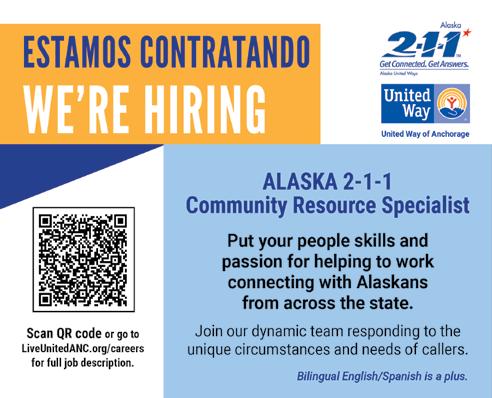
The Science behind the Northern Lights
 BY PEDRO GRATEROL
BY PEDRO GRATEROL
During the morning of February 27th, social media was flooded with beautiful photos of the northern lights. While it is not uncommon for Alaskans to post photos of their encounters with this majestic and unique phenomenon, this time it was different. The multicolored stripes waved through the sky with an unusual intensity. So much so that the phenomenon was spotted not only in Alaska but well below the Arctic region in the south of Canada, Michigan, and even in France, and the United Kingdom. The northern lights have amazed humans for centuries. Although the beautiful lights are fascinating, the science behind them is even more captivating.
The phenomenon begins with the sun, which releases streams of charged electrons into the solar wind, the constant flow of charged particles from the sun to the rest of the solar system. Sometimes they can be relatively moderate, like solar flares, or intense, like a Coronal Mass Ejection, when even plasma and portions of the Sun’s magnetic fields are launched into the Solar system. Particles from solar activity travel through space and eventually reach the Earth’s magnetic field. Their interactions create a series of disturbances called magnetic storms. These storms can have a negative impact on telecommunication, navigation, and electrical systems. The largest of these occurred in 1859 and was known as the Carrington Event. It took down the U.S. telegraph network and caused auroras visible from Texas. This is one of the reasons why scientists are concerned with auroras and the interactions of the sun and the Earth’s magnetic sphere so that they can further protect our systems from any disturbance.
However, it would be reductive to say that the collision of solar particles with the Earth’s magnetic field directly causes the northern lights. Instead,
it is the acceleration into the atmosphere of electrons from the streams of solar activity that leads to the beautiful light show. Electrons fall into the atmosphere and interact with different elements such as hydrogen, nitrogen, and oxygen. They heat these elements and lead to a reaction that causes them to produce different lights. According to NASA, oxygen produces greenish-yellow or red lights and nitrogen produces blue lights. While the two ends of the process were clear, for decades, scientists have been trying to understand how electrons become accelerated in the Earth’s atmosphere to produce the northern lights. A recent study published in the Journal of Geophysical Research has provided a breakthrough in understanding the cause of the northern lights. According to the study, the acceleration of electrons is due to a phenomenon called the Alvén waves.
These waves are created by the interaction of solar activity with the Earth’s magnetic field. According to Jim Schroeder from Wheaton College: “The solar wind shakes Earth’s magnetic field in a number of ways, through eruption of solar plasma, or when the passing solar wind stretches out the geomagnetic field. Stretched magnetic field lines eventually reconnect and snap back toward earth, like a rubber band, launching a spectrum of Alfvén waves on their way.” The Alvén waves cause electrons to surf along the magnetic field lines toward the Earth’s atmosphere, where they collide with gas particles, producing the beautiful glow of the northern lights.
The northern lights allow us to get a better glimpse into the interactions of our planet with our neighboring solar system and, as we continue to learn more about them, we can appreciate their beauty and complexity even more. So, keep your eyes up, because you never know when you will see them!
SOL DE MEDIANOCHE ANCHORAGE, ALASKA 14 MARCH 2023
FOTO: ISTOCK
9 datos interesantes sobre el Iditarod
POR SDMN
El Iditarod anual, la icónica carrera de perros de trineo de Alaska comenzó el 4 de marzo de 2023 con su tradicional inicio ceremonial en el centro de Anchorage. Si bien este año el número de equipos que participan es el más pequeño en la historia de la carrera, los equipos corrieron con entusiasmo por las calles de la ciudad mientras se dirigían al verdadero punto de inicio en Willow Lake, donde comenzó la carrera el 5 de marzo a las 2 PM. Este año el sendero será ligeramente diferente. Los corredores irán de Willow a Nome a través de lo que se conoce como la “Ruta del sur”. Este sendero no se ha utilizado desde 2019. Según Alaska Public Media, es relativamente similar a la otra ruta de la carrera, la Ruta del norte: “Una vez que los equipos llegan a Ophir, corta hacia el sur a través de las montañas Beaver hasta el pueblo fantasma de Iditarod. Desde allí, hay mucho río que atraviesa Shageluk, Grayling y Anvik antes de conectarse con el sendero principal en Kaltag”. APM también mencionó que este sendero es un poco más largo y es conocido por su complejidad. Hay mucho terreno montañoso y rutas expuestas junto al río Yukón. En el momento de escribir este artículo, Ryan Redington, el nieto de Joe Redington, Sr., mejor conocido como “el padre del Iditarod, fue el
primero en cruzar la linea ganadora con 8 dias, 21 horas, 12 minutos y 58 segundos. Aqui te traemos algunos datos interesantes sobre la “Carrera de 1000 millas”.
1. Iditarod significa “lugar lejano” en los idiomas de Ingalik y Holikachu, hablado por la comunidad Athabaskan. La carrera está destinada a honrar la tradición del Sen dero Iditarod, un sistema de senderos que conectaba las ciudades del interior de Alas ka durante la fiebre del oro de principios del siglo XX. El primer Iditarod se celebró en 1973. Sin embargo, partes del sendero ha bían sido utilizadas por las comunidades na tivas de Alaska Athabaskan e Iniupiaq mu cho antes de la llegada de los comerciantes de pieles rusos en el siglo XIX.
2. Si bien se le conoce comúnmente como la “ Carrera de 1000 millas”, la longitud del sendero es en realidad un poco menor. La Ruta del Norte, que normalmente se usa en años pares, es de 975 millas y la Ruta del Sur, utilizada en años impares, es de 998 millas. Las modificaciones recientes, como el desvío de Fairbanks de 2015 y 2017 debido a la falta de nieve, hicieron que la carrera fuera de 979 millas.
3. La carrera tiene puntos de parada. Actualmente hay 26 puestos de control en la ruta norte y 27 en la ruta sur donde los mushers (corredores) tienen que registrarse. Pueden llevar suministros por ade-
lantado, como comida o botines de perro adicionales. Además, hay tres descansos obligatorios: una escala de 24 horas que debe tomarse en cualquier punto de control, y dos escalas de 8 horas, una en cualquier punto de control en el río Yukón y otra en White Mountain.
4. La carrera se suspendió en 1985 porque las inclemencias del tiempo impidieron el envío de suministros a los diferentes puestos de control.
5. Después de que muchos Poodles europeos estándar en el equipo de John Stuer resultaron heridos en la carrera de 1988, sólo se permiten razas de perros del norte
como los Malamutes de Alaska y los Huskies siberianos.
6. El récord del tiempo de victoria más rápido para el Iditarod es de 8 días, 3 horas, 40 minutos y 13 segundos y está en manos de Mitch Seavey desde 2017.
7. Tanto Rick Swenson como Dallas Seavey tienen el récord de más victorias en la carrera del Iditarod. Cada uno tiene 5.
8. Libby Riddles, de Madison Wisconsin, fue la primera mujer en ganar el Iditarod en 1985.
9. El ganador no solo recibe un premio. El musher que llega en el último lugar gana el premio de la “Linterna Roja”.
Nine interesting facts about the Iditarod
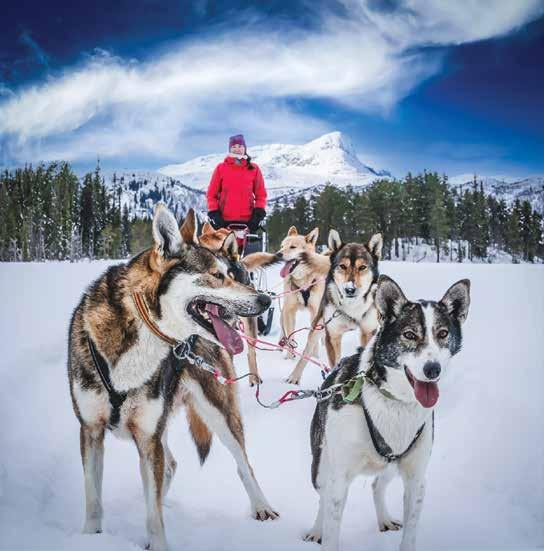 BY SDMN
BY SDMN
The annual Iditarod, Alaska’s iconic sled dog race, began on March 4, 2023, with its traditional ceremonial start in Downtown Anchorage. While this year the number of teams participating is the smallest in the race’s history, the teams excitedly raced through city streets as they made their way to the actual race start, which was on March 5, at 2PM, in Willow Lake. This year the trail will be slightly different. Racers will go from Willow to Nome through what is known as the “Southern trail.” This trail has not been used since 2019. According to Alaska Public Media, it is relatively similar to the Northern trail: “Once teams get to Ophir, it cuts south through the Beaver Mountains to the ghost town of Iditarod. From there, there’s a lot of rivers running through Shageluk, Grayling, and Anvik before linking up with the main trail in Kaltag”. APM also mentioned that this trail is slightly longer and is known for its complexity. There’s plenty of mountain terrain and exposed racing next to the Yukon River. At the time of writing this article, Ryan Redington had crossed the finish line after 8 days, 21 hours, 12 minutes and 58 seconds on the trail. He is Joe Redington, Sr.’s grandson, who is one of the co-found-
ers of the race and is known as the “Father of the Iditarod.” Here are some interesting facts about the “1000-mile race.”
1. Iditarod means “distant place” in the languages of Ingalik and Holikachu, spoken by the Athabaskan people. The race is meant to honor the tradition of the Iditarod Trail, a trail system that connected towns of Inland Alaska during the Gold Rush of the early 20th century. The first Iditarod was held in 1973. However, portions of the trail had been used by Native Alaskan Athabaskan and Inupiaq
communities long before the arrival of Russian Fur traders in the 1800s
2. While it is commonly referred to as the “1000-mile race”, the trail length is slightly smaller. The Northern Route, normally used in even years, is 975 miles and the Southern Rote, used in odd years is 998 miles. Recent modifications, like the 2015 and 2017 Fairbanks reroute because of lack of snow caused the race to be 979 miles.
3. The race has stopping points. There are currently 26 checkpoints on the northern route and 27 on the south-
ern route where mushers have to checkin. They can fly supplies in advance like food or extra dog booties. In addition, there are three mandatory rests: a 24-hour layover that must be taken at any check point, and two 8-hour layovers, one at any checkpoint in the Yukon River and once at White Mountain.
4. The race was suspended in 1985 because inclement weather prevented supplies to be shipped to the different checkpoints.
5. After many Standard European Poodles in John Stuer’s team were hurt in the 1988 race, only northern breeds like Alaskan Malamutes and Siberian Huskies are allowed to race.

6. The record for the fastest winning time for the Iditarod is 8 days, 3 hours, 40 minutes, and 13 seconds and is held by Mitch Seavey since 2017.
7. Both Rick Swenson and Dallas Seavey hold the record for Most victories on the trail. Each has 5.
8. Libby Riddles, from Madison Wisconsin, was the first woman to win the Iditarod in 1985.
9. Not only does the winner get a prize. The musher that arrives in last place wins the “Red Lantern” Award.
MARCH 2023 15 WWW.SOLDEMEDIANOCHENEWS.ORG
FOTO: ISTOCK
ILUSTRACIÓN: LUPE MARROQUIN
Fentanilo: dosis letales
POR DANIEL VICENCIO
El fentanilo es un fármaco opioide sintético que es hasta 50 veces más fuerte que la heroína y 100 veces más fuerte que la morfina. Es un importante factor contribuyente a las sobredosis mortales y no mortales en los EU, su utilización fuera de la ley se acentuó durante la pandemia en 2020 y hoy se ha convertido en un problema de salud pública en 2023.
Hay dos tipos de fentanilo: el farmacéutico utilizado en medicina y el fabricado ilícitamente. La principal diferencia es la dosis utilizada en la fabricación del contenido. Ambos se consideran opioides sintéticos. El fentanilo farmacéutico es recetado por los médicos para tratar el dolor, después de una cirugía o en etapas finales de cáncer por su alto poder analgésico, sin embargo los casos más recientes de sobredosis relacionadas con el fentanilo están vinculados al fentanilo fabricado ilícitamente que se distribuye en mercados de drogas ilegales por su efecto similar al de la heroína, además se añaden otras drogas debido a su extrema potencia, lo que hace que las drogas se vuelvan más baratas, más potentes, mas adictivas y más peligrosas. Así la persona que consume este tipo de productos, invade su organismo con dosis letales. Incluso 2 mg de fentanilo (del tamaño un poco mayor a dos granos de sal) puede ser una dosis letal.
El fentanilo se encuentra disponible en el mercado ilegal en forma líquida o en polvo. Las drogas mezcladas con fentanilo son extremadamente peligrosas y es posible que muchas personas no sepan sus ingredientes y la dosis que contienen.
- Fentanilo en polvo: tiene la apariencia de muchas otras drogas, con frecuencia se
mezcla con heroína, cocaína y metanfeta minas (pastillas que simulan ser opioides recetados).
- Fentanilo líquido: se puede encontrar como aerosol nasal, gotas para los ojos o aplicado en gotas en papel como pequeñas golosinas.
Sobredosis: el fentanilo y otros opioi des son drogas que están involucradas en muertes por sobredosis, pueden ser morta les hasta en pequeñas dosis. Más de 150 personas mueren cada día por sobredosis relacionadas con opioides sintéticos como el fentanilo. La persona que consume no está al tanto de los niveles de fentanilo que contiene, no percibe su sabor ni percibe su olor al ingerirlas. Es casi imposible saber si las drogas han sido mezcladas con fenta nilo, a menos que se sometan a un examen más específico que lo determine.
Es importante reconocer los signos de una sobredosis por opioides, podemos salvar vidas. Observar es importante, tal como:
- Pupilas pequeñas, contraídas, como punta de alfiler
- Quedarse dormido o perder el conocimiento
- Respiración lenta, débil o sin respiración
- Sonidos de atragantamiento o gorjeos
- Cuerpo flácido con piel fría, húmeda, pegajosa, descolorida en labios y uñas
Podría ser difícil saber si una persona está transitando una sobredosis, es importante tener en cuenta cómo actuar: podría salvar una vida. Los pasos son llamar al 911, administrar naloxona, tratar de mantener a la persona despierta y respirando, colocar a la persona de costado para evitar asfixia y quedarse con ella hasta que llegue el personal de emergencias.
FENTANYL: Lethal Dosage
BY DANIEL VICENCIO
Fentanyl is a synthetic opioid drug that is up to 50 times stronger than heroin and 100 times stronger than morphine. It is a major contributor to fatal and non-fatal overdoses. In the US, its illegal use was accentuated during the pandemic in 2020 and has become a public health crisis in 2023.

There are two types of fentanyl: the pharmaceutical used in medicine and the illegally manufactured. The main difference is the dosage used in the manufacture of the content. Both are considered synthetic opioids. Pharmaceutical fentanyl is prescribed by doctors to treat pain, after surgery or in the final stages of cancer because of its high analgesic power, however the most recent cases of fentanyl-related overdoses are linked to illicitly manufactured fentanyl that is distributed in illegal drug markets. Because of their effect similar to that of heroin, and due to their extreme potency, other drugs are also added making the drugs cheaper, more potent, more addictive and more dangerous. Thus, the person who consumes this type of products, overwhelms their body with lethal doses. Even 2
mg of fentanyl (slightly larger than two grains of salt) can be lethal.
Fentanyl is available on the illegal market in liquid or powder form. Drugs mixed with fentanyl are extremely dangerous and many people may not know their ingredients or the dosage they contain.
- Fentanyl in powder form: Looks like many other drugs, often mixed with heroin, cocaine, and methamphetamine (pills that pretend to be prescription opioids).
- Liquid fentanyl: can be found as a nasal spray, eye drops or as treats where small drops are applied to paper.
Overdose: Fentanyl and other opioids are drugs that are involved in overdose deaths, they can be fatal in even small doses. More than 150 people die every day from overdoses related to synthetic opioids like fentanyl. The person who consumes drugs is not aware of the levels of fentanyl they contain, does not perceive its taste or perceives its smell when ingesting them. It is almost impossible to know if the drugs have been mixed with fentanyl unless they undergo a more specific test that determines it.
It’s important to recognize the signs
La naloxona salva vidas: cualquier persona puede llevar consigo naloxona, administrarla a alguien que tiene una sobredosis y potencialmente salvar una vida. Este medicamento no perjudica a una persona ya sea que este transitando una sobredosis con o sin opioides. Por eso es mejor utilizarla de todas formas. Tiene el poder de revertir una sobredosis de opioides, incluidos heroína, fentanilo y medicamentos recetados. Es segura y fácil de usar y es de fácil acceso por su venta sin receta médica previa, a lo largo y ancho de los 50 estados. Hay dos formas, una de atomizador precargado que rocía el medicamento en el interior de la nariz y otra como inyectable, una solución que se administra en el músculo o debajo de la piel.
La naloxona puede restablecer en 2 o 3 minutos la respiración normal de una persona cuya respiración disminuyó, o hasta se detuvo, como resultado de una sobredosis de opioides. Es fácil de usar y de llevar. El 80%
de las muertes por sobredosis ocurrieron dentro de una casa en 2019, 50,000 personas murieron de una sobredosis relacionada con opioides. En casi un 40% de los fallecimientos por sobredosis, otra persona estaba presente. Tener naloxona disponible permite que esa otra persona pueda ayudar en caso de una sobredosis mortal y salvar vidas.
Fuentes: www.cdc.gov
Libro Manual Merck de Información Médica para el Hogar.
Daniel Vicencio es Licenciado en Producción de Bioimagenes recibido de la Universidad Nacional de Córdoba y Cruz Roja Internacional en 2010 en su ciudad natal San Rafael; además es Enfermero Profesional especializado en Polisomnografia y Resonancia Magnética Nuclear, actualmente trabaja en el Hospital Santa Rosa, en Santa Rosa del Conlara, San Luis, Argentina.
of an opioid overdose, it can save lives. Some of the symtoms are:
- Small, constricted, pintip-like pupils
- Falling asleep or losing consciousness
- Feeling lethargic or weak, or not breathing
- Choking or chirping sounds
- Sagging body with cold, clammy, sticky, discolored skin on lips and nails
It could be difficult to know if a person is going through an overdose, it is important to consider how to act: it could save a life. The steps are to call 911, administer naloxone, try to keep the person awake and breathing, place the person on their side to avoid chocking, and stay with them until emergency personnel arrive.
Naloxone saves lives: Anyone can carry naloxone with them, give it to someone who overdoses, and potentially save a life. This medication does not harm a person whether they are overdosing on opioids or not. That’s why it’s best to use it anyway. It has the power to reverse an opioid overdose, including heroin, fentanyl, and prescription drugs. It is safe and easy to use and is easily accessible without a prescription throughout all 50
states. There are two forms, one of a prefilled nasal spray and another as an injectable, a solution that is given into the muscle or under the skin.
Naloxone can restore normal breathing in 2 to 3 minutes for a person whose breathing slowed, or even stopped, because of an opioid overdose and it is easy to use and carry. Eighty percent of overdose deaths occurred inside a home in 2019, 50,000 people died from an opioid-related overdose. In nearly 40% of overdose deaths, another person was present. Having naloxone available allows that other person to help in the event of a fatal overdose and save lives.
Sources: www.cdc.gov
Merck Home Health Information Handbook
Daniel Vicencio received his degree in Bioimaging Production from the National University of Córdoba, and the International Red Cross in 2010 in his hometown San Rafael; He is also a Registered Nurse specialized in Polysomnography and Nuclear Magnetic Resonance, currently works at the Hospital Santa Rosa, in Santa Rosa del Conlara, San Luis, Argentina.
SOL DE MEDIANOCHE ANCHORAGE, ALASKA 16 MARCH 2023
A partir del 1 de abril millones de latinos perderán Medicaid
Catorce millones de personas, muchos latinos y niños, perderán Medicaid el próximo 1 de abril. Ese día, los estados volverán a verificar la elegibilidad de sus beneficiarios por primera vez en tres años. Medicaid proporcionaba cobertura médica continua a raíz de la pandemia. En Alaska lo perderán unas 28,000 personas, de las 234,000 actuales inscritas en Medicaid. En todo el país se verán afectados cinco millones de latinos.
POR CARLOS MATÍAS
La cobertura continua de Medicaid se termina el 31 de marzo. El 1 de abril vuelven a ser obligatorias las renovaciones regulares. Es decir; vuelven los papeleos a cumplir periódicamente para no perder la cobertura sanitaria.
Durante la pandemia por Covid-19, la mayoría de las personas han tenido derecho a los servicios de Medicaid sin interrupción y sin trámites de renovación. Pero a partir del 1 de abril quienes no renueven quedarán desprotegidos. Hay casi 84 millones de personas inscritas durante un período de 12 meses.
Casi 18 millones de personas corren este peligro. Aunque casi siete millones de las mismas seguirán siendo elegibles, perderán su cobertura por errores administrativos tales como tener la información de contacto desactualizada, pasar por un proceso de renovación confuso, no enviar la documentación a tiempo o tener acceso a la información sobre su cobertura exclusivamente en inglés.
“El impacto de esta pérdida de cobertura afectará más a los latinos y a los niños”, dice a Sol de Medianoche la doctora Laura Guerra-Cardús, directora de Estrategia Estatal de Medicaid en el equipo de Salud del Centro de Prioridades Presupuestarias y Políticas (CBPP, por las siglas en inglés de Center on Budget and Policy Priorities).
“Las investigaciones predicen que, de los latinos que perderán su cobertura, la mayoría (64%) seguirá siendo elegible, y de cada cuatro niños que perderán la cobertura durante la cancelación, tres seguirán siendo elegibles”.
Para evitar la pérdida de cobertura sanitaria, las personas con Medicaid deberán completar el proceso de renovación de elegibilidad. Deben comunicarse con la ofici
Beginning April 1, millions of Latinos will lose Medicaid

Fourteen million people, many Latinos, and children, will lose Medicaid on April 1. On that day, states will re-verify their beneficiaries’ eligibility for the first time in three years. Medicaid provided continuous medical coverage in the wake of the pandemic. In Alaska, from the current 234,000 registered, about 28,000 people will lose Medicaid. Nationwide, five million Latinos will be affected.
BY CARLOS MATÍAS
Continued Medicaid coverage ends on March 31. On April 1, regular renewals become mandatory again. In other words, paperwork must be completed periodically so as not to lose health coverage.
During the Covid-19 pandemic, most people qualified to receive Medicaid services without interruption and without having to fill out renewal paperwork. But as of April 1, those who do not renew will be left unprotected. There are nearly 84 million people enrolled over a

12-month period.
Nearly 18 million people are at risk, and this includes nearly seven million people who will remain eligible but will lose their coverage because of administrative errors such as having outdated contact information, going through a confusing renewal process, not sending their documentation on time, or having access to information about their coverage exclusively in English.
“The impact of this loss of coverage will be felt most by Latinos and children,” Laura Guerra-Cardús, Ph.D., di
rector of State Medicaid Strategy on the Center on Budget and Policy Priorities’ (CBPP) Health team, tells Sol de Medianoche. “Research predicts that, of the Latinos who will lose coverage, the majority (64%) will remain eligible, and of every four children who will lose coverage during disenrollment, three will remain eligible.”
To avoid losing health coverage, individuals with Medicaid must complete the eligibility renewal process. They should contact their state Medicaid office and make sure their contact information and mailing address are up to date. They should check their mail and watch for a letter with information about their Medicaid or CHIP coverage.
If they receive a renewal form, they should be sure to complete it and send it back. They could receive their renewal notice any time this year or early next year. If they no longer qualify, they may be able to get affordable health coverage through the Affordable Care Act Marketplace. For more information, visit HealthCare.gov (or the health insurance marketplace in your state) or call 1-800318-2596.
na de Medicaid de su estado y asegurarse de que su información de contacto y dirección postal estén actualizadas. Deben revisar su correo y estar atentos a recibir una carta con información sobre su cobertura de Medicaid o CHIP.
Si reciben un formulario de renovación, deben asegurarse de completarlo y enviarlo de vuelta. Podrían recibir su aviso de renovación en cualquier momento durante este año o a principios del próximo. Si ya no califican, es posible que puedan
obtener una cobertura de salud asequible a través del Mercado de la Ley del Cuidado de Salud a Bajo Precio. Para obtener más información, visiten HealthCare.gov (o el mercado de seguros de salud en su estado) o llamen al 1.800-318-2596.
17 WWW.SOLDEMEDIANOCHENEWS.ORG
-
FOTO: ISTOCK
¡Atención consumidores! Los estafadores robaron $8,800 millones en 2022
POR PEDRO GRATEROL
Durante una rueda de prensa de Ethnic Media Services celebrada el 10 de marzo de 2023, la Comisión Federal de Comercio (FTC) reveló que, a pesar de que el número de informes de fraude disminuyó de 2.9 millones en 2021 a 2.4 millones en 2022, la cantidad total de dinero perdido por los consumidores y las pequeñas empresas aumentó drásticamente a 8,800 millones de dólares. Además, los fraudes por impostores y por las compras en línea fueron los más comunes. Sin embargo, el fraude por inversión terminó costando más a los consumidores, por un total de 3,800 millones de dólares. La mayoría de estos se perdieron debido a las estafas de criptomonedas.
La rueda de prensa también destacó cómo los estafadores atacan a las comunidades de color de maneras específicas. Por ejemplo, en la comunidad latina, los informes más comunes fueron sobre estafas de impostores. La mayoría estuvo relacionada con problemas bancarios, prestamistas, cobro de deudas, problemas de automóviles y algunas veces con oportunidades de negocio. Rosario Méndez, Fiscal de la División de la Oficina de Educación del Consumidor y las Empresas de la Comisión Federal de Comercio de Protección del Consumidor, declaró que la FTC ha tenido varios casos relacionados con oportunidades de negocio falsas y estafas de trabajo en casa dirigidas específicamente a los latinos. Del mismo modo, el mayor número de informes de la comunidad afro-americana fueron sobre solicitudes de préstamos de día de pago y programas de alivio de la deuda estudiantil.
Si bien las estafas telefónicas siguieron prevaleciendo, los funcionarios identificaron el papel cambiante de las redes sociales. El año pasado, las redes sociales fueron el método de contacto con la mayor pérdida agregada en dólares, $1,200 millones. Esto es especialmente común con los esquemas de criptomonedas. Los consumidores deben tener mucho cuidado porque
Consumers beware! Scammers stole $8.8 billion in 2022
BY PEDRO GRATEROL
During an Ethnic Media Services
tas estafas y está proporcionando recursos para ayudar a los consumidores a detectar y evitar actividades fraudulentas.
Adicionalmente, y debido a estos métodos cada vez más elaborados y específicos, los expertos de la FTC destacaron la necesidad de que los consumidores detecten y se protejan contra el fraude. Cristina Miranda, especialista en educación del consumidor, mencionó que el fraude afecta a todas las comunidades y que los estafadores a menudo se dirigen a personas que son nuevas en el sistema y la cultura de los Estados Unidos. Para abordar este problema, la FTC tiene nuevos recursos en más de 12 idiomas en: consumer.ftc.gov/features/ languages. Allí, los consumidores pueden encontrar información sobre la prevención de estafas en amárico, árabe, chino, tanto simplificado como tradicional, español, francés, hmong, coreano, ruso, somalí, tagalo, vietnamita y ucraniano.
Todos somos susceptibles a las estafas, por lo que, para evitarlas, los consumidores debemos tener cuidado con cualquier solicitud no solicitada de dinero o información personal y debemos informar de cualquier actividad sospechosa a la FTC. Si desea denunciar un fraude o encontrar más información, visite https://reportfraud. ftc.gov/#/, en español, https://reportefraude.ftc.gov/#/
news briefing held on March 10, 2023, the Federal Trade Commission (FTC) revealed that even though the number of fraud reports decreased from 2.9 million in 2021 to 2.4 million in 2022, the total amount of money lost by consumers and small businesses increased dramatically to $8.8 billion.
In addition, imposter fraud and online shopping were the most common scams. However, investor fraud ended up costing consumers the most, totaling $3.8 billion. The majority of this was lost to cryptocurrency scams.

The news briefing also highlighted how scammers target ethnic communities in unique ways. For example, in the Latino community, the top report was on impostor scams, with most Latino communities filing a higher percentage of reports relating to problems with banks and lenders, debt collection, auto issues, and business opportunities. Rosario Mendez, Attorney for the Division of Consumer and Business Education Bureau of the Consumer Protection Federal Trade Commission, stated that the FTC has had several cases related to bogus business opportunities and workat-home scams specifically targeting Latinos. Similarly, the largest number of reports from the black community was about payday loan applications and student debt relief programs.
While telephone scams continued to be prevalent, the officials identified the changing role of social media. Last year,

social media was the contact method with the highest aggregated dollar loss, with consumers losing $1.2 billion. This is especially common with cryptocurrency schemes. Consumers should be very careful because scammers have developed websites that seem legitimate and even show fake dashboards that indicate how consumers’ money is presumably “growing”. The FTC is working to combat these scams by providing resources to help consumers spot and avoid fraudulent activity.
Because of these increasingly elaborate and targeted methods, the FTC experts highlighted the need for consumers to spot and protect themselves against fraud. Cristina Miranda, Consumer Education Specialist, mentioned that fraud affects every community and scammers often target people who are new to the U.S. system and culture. To address this issue, the FTC has new resources in over 12 languages at consumer.ftc.gov/features/languages. There, consumers can find information about scam prevention in Amharic, Arabic, and Chinese — both simplified and traditional — French, Hmong, Korean, Russian, Somali, Spanish, Tagalog, Vietnamese, and Ukrainian.
We are all susceptible to scams and to prevent them, consumers should be wary of any unsolicited requests for money or personal information, and should report any suspicious activity to the FTC. If you want to report a fraud or find further information, visit https://reportfraud.ftc.gov/#/, in Spanish, https:// reportefraude.ftc.gov/#/
La comunidad dominicana celebra el día de su independencia
POR SDMN
El comité de Dominicanos Unidos en el estado de Alaska organizó un evento comunitario para celebrar el día de su independencia.
La República Dominicana es un país hermoso y cálido que se encuentra en el corazón del caribe rodeado por el océano Atlántico al norte y por el Mar Caribe al sur. Una tercera parte de esta bella isla es compartida con otro país, Haití. Tiene una población que supera los 11 millones de habitantes.
El 27 de febrero de 1844, hace aproximadamente 179 años, celebró su última independencia, la cual fue de Haití. Años antes, la Republica Dominicana había estado bajo el dominio de la corona española.
La República Dominicana tiene las 33 principales primicias de America, entre ellas están: La primera Catedral Primada de America, el primer Hospital, la primera Misa oficiada en America, el primer Santiago de America, las primeras sedes de organizaciones religiosas, el primer libro en castellano escrito en America, el primer Santuario cristiano en America, y la primera Universidad del Nuevo Mundo, entre otras.
Los dominicanos vienen de un conglomerado racial diversificado: europeos, africanos, árabes, chinos, judíos.
Son un conjunto de personas con los mismos valores y sentimientos tradicionales de su patria.
Hay una población de 2,181,419 residiendo en los 50 Estados de los Estados Unidos.
En Alaska, viven alrededor de 2,271 residentes legales.
Durante el festejo hubo bailes típicos de la república dominicana, ricos platillos dominicanos, café colombiano y la oportu nidad de celebrar con viejos amigos. Las mujeres dominicanas vistieron orgullosa mente trajes típicos de la isla los cuales llevan los colores de su bandera. Entre las diferentes nacionalidades que atendieron la celebración surgieron nuevas amistades, un sentimiento de unidad y el deseo por se guir aprendiendo unos de otros.
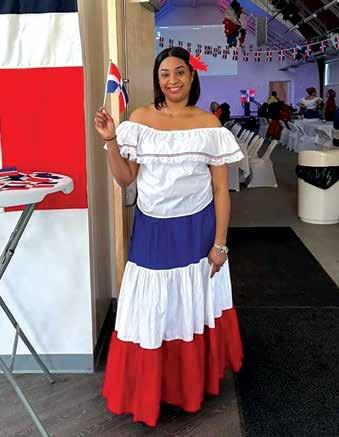
El evento se logró gracias al apoyo de diversos miembros de la comunidad latina y a las largas horas de esfuerzo y dedica ción del Comité de Dominicanos Unidos en el estado de Alaska.
¡Nuestro agradecimiento a Ninetta Regalado, Angela Jimenez, Gabriel McQueen, Mercedes Blanco y Eusebio Martínez por compartir con nosotros un evento
SOL DE MEDIANOCHE ANCHORAGE, ALASKA 18 MARCH 2023
FOTO: PEXELS
IMAGE: ETHNIC MEDIA SERVICES
Tras la presión de la administración de Dunleavy, Walgreens no distribuirá píldoras abortivas
POR MATT ACUÑA BUXTON
Cuando la cadena de farmacias Walgreens comience a distribuir la píldora abortiva Mifepristona, no lo hará en Alaska a pesar de que el aborto es un derecho protegido en la Constitución de Alaska.
Esto se debe a que Walgreens está cediendo a la presión de un grupo de fiscales generales republicanos, incluido el fiscal general de Alaska, Treg Taylor, que amenazaron con acciones legales si la compañía comenzaba a distribuir el medicamento en sus estados. En una carta reportada por Politico, la compañía notificó a los fiscales generales participantes que no dispensará las píldoras ni las enviará a ninguno de esos estados.
“Walgreens actualmente no está dispensando Mifepristona en ninguna de sus ubicaciones. Como saben, para obtener la certificación de la FDA, las farmacias participantes deben cumplir con una serie de requisitos de seguridad y mitigación de riesgos para dispensar este medicamento. En este momento, estamos trabajando en el proceso de certificación, que incluye la evaluación de nuestra red de farmacias para determinar dónde dispensaremos Mifepristona y protocolos de capacitación y actualizaciones para nuestros farmacéuticos”, explicó una carta publicada en el artículo de Politico. “Walgreens no tiene la intención de dispensar Mifepristona dentro de su estado y no tiene la intención de enviar Mifepristona a su estado desde ninguna de nuestras farmacias. Si este enfoque cambia, nos aseguraremos de notificarle”.
En su discurso anual sobre el estado del estado, el gobernador republicano Dunleavy terminó su discurso con un llamado a hacer de Alaska “el estado más pro-vida de todo el país”. Prohibir el aborto en Alaska requeriría un cambio en la constitución del estado que requiere una súper mayoría de ambas cámaras legislativas, así como un
Following pressure by Dunleavy administration, Walgreens won’t distribute abortion pill
voto público. Es poco probable que eso suceda, pero la administración Dunleavy claramente ha encontrado otras formas de atacar los derechos al aborto en el estado.
Alaska también es parte de una demanda ante un juez de Texas que busca revocar la aprobación de la Administración de Alimentos y Medicamentos para la Mifepristona por completo, un esfuerzo de las administraciones antiaborto para negar el acceso a una de las formas más utilizadas para interrumpir un embarazo, incluso en estados, como Alaska, donde el aborto sigue siendo legal después de la anulación de Roe vs Wade.
En cuanto a ese caso de Texas, a los proveedores de abortos en Alaska les preocupa que tenga un impacto particularmente duro en los habitantes de Alaska que viven en lugares rurales y remotos donde hay acceso limitado a las clínicas que realizan el procedimiento. Alrededor de 1,200 a 1,300 personas escogen tener un aborto en Alaska cada año, y aproximadamente la mitad elige la píldora abortiva en lugar de una clínica.
“La Mifepristona es segura. Es eficaz. Ha sido utilizada por más de 4 millones de personas desde que la FDA la aprobó hace más de 20 años”, dijo Rose O’Hara Jolley, directora de Planned Parenthood Alliance Advocates en Alaska, a KTOO / KDLG. “Así que este caso es infundado. No hay razón desde el punto de vista de la ciencia, desde el punto de vista de la atención médica. Se trata simplemente de restringir el acceso al aborto, incluso en estados donde el aborto es legal”.
Matt Buxton es un reportero político de mucho tiempo que ha escrito para el Fairbanks Daily News-Miner y el blog político The Midnight Sun. También es autor del boletín diario de política, The Alaska Memo, y con frecuencia se le puede encontrar tuiteando en vivo reuniones públicas en Twitter: @mattbuxton.
BY MATT ACUÑA BUXTON
When pharmacy chain Walgreens starts distributing the abortion pill Mifepristone, it won’t be doing so in Alaska despite abortion being a right protected in the Alaska Constitution.
That’s because Walgreens is bowing to pressure from a collection of Republican attorneys general—including Alaska Attorney General Treg Taylor— that threatened legal action if the company began distributing the drug in their states. In a letter reported on by Politico, the company notified the participating attorneys general that it won’t be dispensing the pills from from or shipping them into any of those states.
“Walgreens is not currently dispensing Mifepristone in any of its locations. As you know, to become certified by the FDA, participating pharmacies must satisfy a range of safety and risk mitigation requirements to dispense this drug. At this time, we are working through the certification process, which includes the evaluation of our pharmacy network to determine where we will dispense Mifepristone and training protocols and updates for our pharmacists,” explained one letter posted in the Politico article. “Walgreens does not intend to dispense Mifepristone within your state and does not intend to ship Mifepristone into your state from any of our pharmacies. If this approach changes, we will be sure to notify you.”
In his annual state of the state address, Republican Gov. Dunleavy ended his speech with a call to make Alaska “the most pro-life state in the entire country.” Outlawing abortion in Alaska would require a change to the state’s
constitution that takes a super-majority of both legislative chambers as well as a public vote. That’s unlikely to happen, but the Dunleavy administration clearly has found other ways to attack abortion rights in the state.
Alaska is also party to a lawsuit before a Texas judge that seeks to overturn Food and Drug Administration approval for Mifepristone altogether, an effort of anti-abortion administrations to deny access to one of the most used forms for ending a pregnancy even in states, like Alaska, where abortion remains legal after the overturning of Roe v. Wade.
As for that Texas case, abortion providers in Alaska worry that it will have a particularly harsh impact on Alaskans living in rural and remote locations where there’s limited access to clinics that perform the procedure. About 1,200 to 1,300 people seek abortions in Alaska each year, with about half choosing the abortion pill over a clinical one.
“Mifepristone is safe. It’s effective. It has been used by more than 4 million people since the FDA approved it more than 20 years ago,” Rose O’Hara Jolley, the director of Planned Parenthood Alliance Advocates in Alaska, told KTOO/ KDLG. “So this case is baseless. There is no reason from a science standpoint, from a health care standpoint. It is simply about restricting access to abortion, even in states where abortion is legal.”
Matt Buxton is a long-time political reporter who has written for the Fairbanks Daily News-Miner and The Midnight Sun political blog. He also authors the daily politics newsletter, The Alaska Memo, and can frequently be found live-tweeting public meetings on Twitter: @mattbuxton.
The Dominican community celebrates its Independence Day
BY SDMN
The committee of Dominicanos Unidos en el estado de Alaska organized a community event to celebrate their Independence Day.

The Dominican Republic is a beautiful and warm country that is located in the heart of the Caribbean surrounded by the Atlantic Ocean to the north and the Caribbean Sea to the south. A third of this beautiful island is shared with another country, Haiti. It has a population that exceeds 11 million inhabitants.
On February 27, 1844, approximately 179 years ago, it celebrated its last independence, which was from Haiti. Years earlier, the Dominican Republic had been
under the rule of the Spanish crown.
Some interesting facts about the Dominican Republic are:
It boasts the first Cathedral of America, the first hospital, the first Mass officiated in America. It hosts the first Santiago de America, the first headquarters of religious organizations. It is home to the first book written in Spanish in America, the first Christian Shrine in America, and the first University of the New World, to name a few.
Dominicans come from a diversified racial conglomerate: Europeans, Africans, Arabs, Chinese, Jews.
They are a collection of people with the same traditional values and feelings of their homeland.
There is a population of 2,181,419 residing in the United States, and in Alaska, there are about 2,271 legal residents.
The program presented typical dances, tasty Dominican dishes, Colombian cof fee, and the opportunity to visit with old friends. Dominican women proudly wore typical dresses which bear the colors of their flag. Among the different nation alities that attended the celebration, new friendships emerged, along with a feeling of unity and a desire to continue learning from each other.
The event was accomplished with the support of various members of the Latino community and the long hours of effort and dedication of the organizing committee.
Thank you, Ninetta Regalado, Angela Jimenez, Gabriel McQueen, Mercedes Blanco and Eusebio Martínez,
MARCH 2023 19 WWW.SOLDEMEDIANOCHENEWS.ORG
for sharing
¿Es el indulto presidencial a los Dreamers la única forma de protegerlos?
Crece la desesperación entre los grupos de defensa de los derechos de los inmigrantes ante la continua parálisis política y el endurecimiento de las normas bajo la administración Biden.
POR PILAR MARRERO ETHNIC MEDIA SERVICES
Cuando las perspectivas de cualquier solución legislativa para los Dreamers, por no hablar de otros inmigrantes indocumentados, parecen más improbables que nunca, el Centro de Estudios California-México vuelve a sacar la idea de un indulto presidencial en su boletín “El Magonista“.
Esta idea ya se ha debatido antes. Algunos activistas pidieron al expresidente Obama que usara su autoridad de indulto presidencial justo antes de que el entonces presidente electo Trump tomara posesión a principios de 2017 para proteger a los inmigrantes indocumentados y, como mínimo, a los Dreamers, protegidos y desprotegidos por el programa DACA de Obama.
No lo hizo, y Trump intentó por todos los medios eliminar DACA, el asilo y a los inmigrantes. Los tribunales protegieron DACA, pero está bajo asedio de nuevo, y su legalidad probablemente irá a la Corte Suprema por tercera vez. Ha sobrevivido dos veces antes, pero es dificil imaginar que lo haga una tercera vez con la composición actual del SCOTUS.
El editorial de El Magonista aboga por que el presidente Biden utilice su indulto para “los Dreamers y otros indocumentados que viven en Estados Unidos.”
“Ninguna otra solución viable ha sido sugerida por otros grupos de inmigración
o funcionarios electos –”, argumenta el artículo. “Ha llegado el momento de que los Dreamers se pongan de pie y exijan al presidente Biden que emita un perdón completo a todos los residentes indocumentados.”
Han pasado 21 años desde que se presentó en el Congreso la primera legislación DREAM Act para regularizar la situación de los jóvenes traídos a Estados Unidos cuando eran niños. Desde entonces, los Dreamers se han convertido en una poderosa fuerza de defensa en el ámbito de la política de inmigración de Estados Unidos.
Algunos activistas indican que un indulto no regularizará el estatus de nadie, y no está claro cuál será la fuerza legal de dicho indulto, teniendo en cuenta que estar en el país como indocumentado es, en el mejor de los casos, una violación civil de las leyes y no un delito.
Pero las cosas se están poniendo desesperadas en el movimiento por los derechos de los inmigrantes porque, como indica “El Magonista”, “nadie ha sugerido nada más que esfuerzos huecos y curitas para aliviar de una vez a los 11 millones de inmigrantes indocumentados que viven, trabajan y pagan impuestos en Estados Unidos ahora mismo.”
El Gobierno de Biden empezó protegiendo a los Dreamers, cambiando muchas nor-
mas y regulaciones administrativas de la era Trump y proponiendo una reforma migratoria integral desde el primer día. Pero desde entonces ha endurecido su postura en materia de asilo y fronteras por la presión política de los republicanos restriccionistas y la llegada de posibles solicitantes de asilo de Venezuela, Nicaragua y Cuba, entre otros.
Esta misma semana, el gobierno de Biden propuso una nueva norma sobre asilo que unió al movimiento por los derechos de los inmigrantes, típicamente fragmentado, en contra de la medida, a la que llamaron la “segunda prohibicion de Trump”. Parece un movimiento político para proteger a Biden del apelativo de “presidente de fronteras abiertas” que tanto gusta a los republicanos. Pero el restriccionismo nunca protegió a los demócratas de los ataques políticos republicanos contra la inmigración.
Obama hizo más que ningún otro presidente demócrata para deportar inmigrantes y mantenerlos fuera del país, un esfuerzo nunca reconocido por su oposición. Pero también creó DACA, un estatus temporal que protege a unos 600.000 Dreamers, y que ahora cumple diez años.
Este país ha alcanzado ya más de tres décadas de parálisis en política migratoria.
Pilar Marrero es editora asociada de Ethnic Media Services y ha cubierto inmigración durante al menos 20 años para La Opinión y otros medios. En 2012, escribió el libro Killing the American Dream (Matando el sueño americano), una crónica de 25 años de contratiempos en la política de inmigración, y no ha cambiado mucho desde entonces.
Is a Pardon for Dreamers the Only Way to Protect Them?
There is growing desperation among immigrant rights groups amid continued policy paralysis and a tightening of rules under the Biden administration. Some argue a pardon is the only way forward.
BY PILAR MARRERO, ETHNIC MEDIA SERVICES
With the prospect of a legislative solution for Dreamers – and the millions of undocumented immigrants in the country – as far off as ever, the California-Mexico Studies Center is raising anew the idea of a presidential pardon in its newsletter, “El Magonista.”
The idea is not new. In 2017, immigrant rights activists asked former President Obama to use his pardon authority in the days prior to then-President-elect Trump’s inauguration to protect undocumented immigrants or, at the very least, Dreamers.
Obama refused, and under Trump every effort was made to eliminate Obama’s signature DACA program, which offered temporary protection for those undocumented immigrants who arrived in the US as children.
While courts at the time protected DACA, it’s now under siege again and will likely come before the Supreme Court for a third time. It has survived similar legal challenges twice before, but all bets are off with the current makeup of SCOTUS.
The editorial by El Magonista calls on President Biden to use his pardon for “Dreamers and other undocumented peoples living in the United States.”
“No other viable solutions have been suggested by any other immigration groups or elected officials – PERIOD,” the authors argue. “The time has come for Dreamers to stand up and demand President Biden issue a full pardon to all undocumented residents.”
It’s been 21 years since the first DREAM Act legislation was introduced in Congress. Dreamers have since become a powerful advocacy voice within the US immigration policy arena.

But some activists contend that a pardon will not regularize Dreamers’ status. They also question the legal force such a pardon would carry given that under current law being undocumented is a civil
violation rather than an actual crime.
But there is a growing sense of desperation within the immigrant rights movement because, as El Magonista notes, “no one else has suggested anything but hollow, band-aid efforts to finally relieve the 11 million undocumented immigrants living, working and paying taxes in the U.S. right now.”
From day one the Biden administration promised comprehensive immigration reform, including protection for Dreamers. And while it has reversed many Trump-era administrative rules and regulations, it has since hardened its position on asylum and border issues in response to growing political pressure from the right coupled with the continued arrival of migrants from Venezuela, Nicaragua, and Cuba, among others.
Just last week the administration proposed a new rule on asylum requiring non-Mexican petitioners to first seek asylum in one of the countries they pass through before entering the US. The move united the typically fragmented immigrant rights movement in opposition to what they are calling the “Trump Ban 2”
While clearly designed to deflect conservative criticism of Biden as an “open border President,” the fact is that restrictionism has never been a winning strategy for Democrats, either in protecting them from Republican attacks on immigration or in winning votes from erstwhile supporters.
Obama is a perfect case in point. He deported more immigrants than almost any prior president, a fact that won him few, if any, Republican allies. He also created DACA, protecting some 600,000 Dreamers from deportation.
A decade later, even that protection now appears to be faltering, leaving the country – and millions of undocumented immigrants – mired in continued immigration policy paralysis.
Pilar Marrero is the Associate Editor of Ethnic Media Services and has covered immigration for at least 20 years for La Opinion and other media. In 2012, she wrote the book Killing the American Dream, chronicling 25 years of immigration policy mishaps, and not much has changed since then.
SOL DE MEDIANOCHE ANCHORAGE, ALASKA 20 MARCH 2023
FOTO: CORTESÍA


























 BY CAMPBELL SMALL
BY CAMPBELL SMALL
 BY SDMN
BY SDMN





 BY PEDRO GRATEROL
BY PEDRO GRATEROL
 BY SDMN
BY SDMN








